A B C D E F G H I J K L M N O P Q R S T U V W X Y Z
- Acute myeloid leukemia
-
Adult acute myeloid leukemia (AML) is a type of cancer in which the bone marrow makes abnormal myeloblasts (a type of white blood cell), red blood cells, or platelets. Leukemia may affect red blood cells, white blood cells, and platelets. There are different subtypes of AML.
- Allele
-
An Allele is an alternate version of the same gene. Within the human population, for example, every individual has genes that determine their physical characteristics. Variations in these genes lead to variations in appearance.
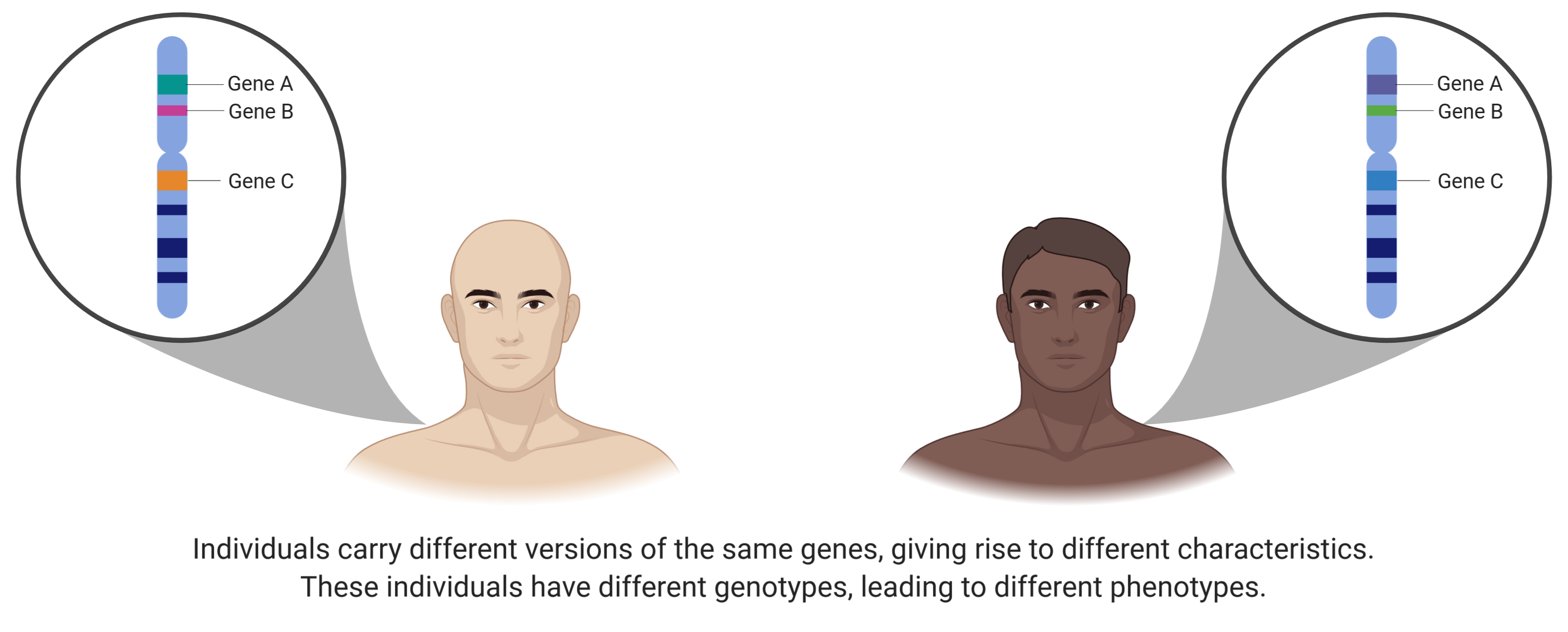
- Alternative splicing
-
Alternative splicing is a process that allows cells to produce more than one different protein from one single gene.
Protein-coding genes contain regions of DNA called introns and exons. The exons code for a protein product, while the introns do not. Following transcription, the introns must be removed from the mRNA by a process called splicing. In the process, cells can also remove exons to create different combinations of exons in the spliced mRNA, leading to different protein products.
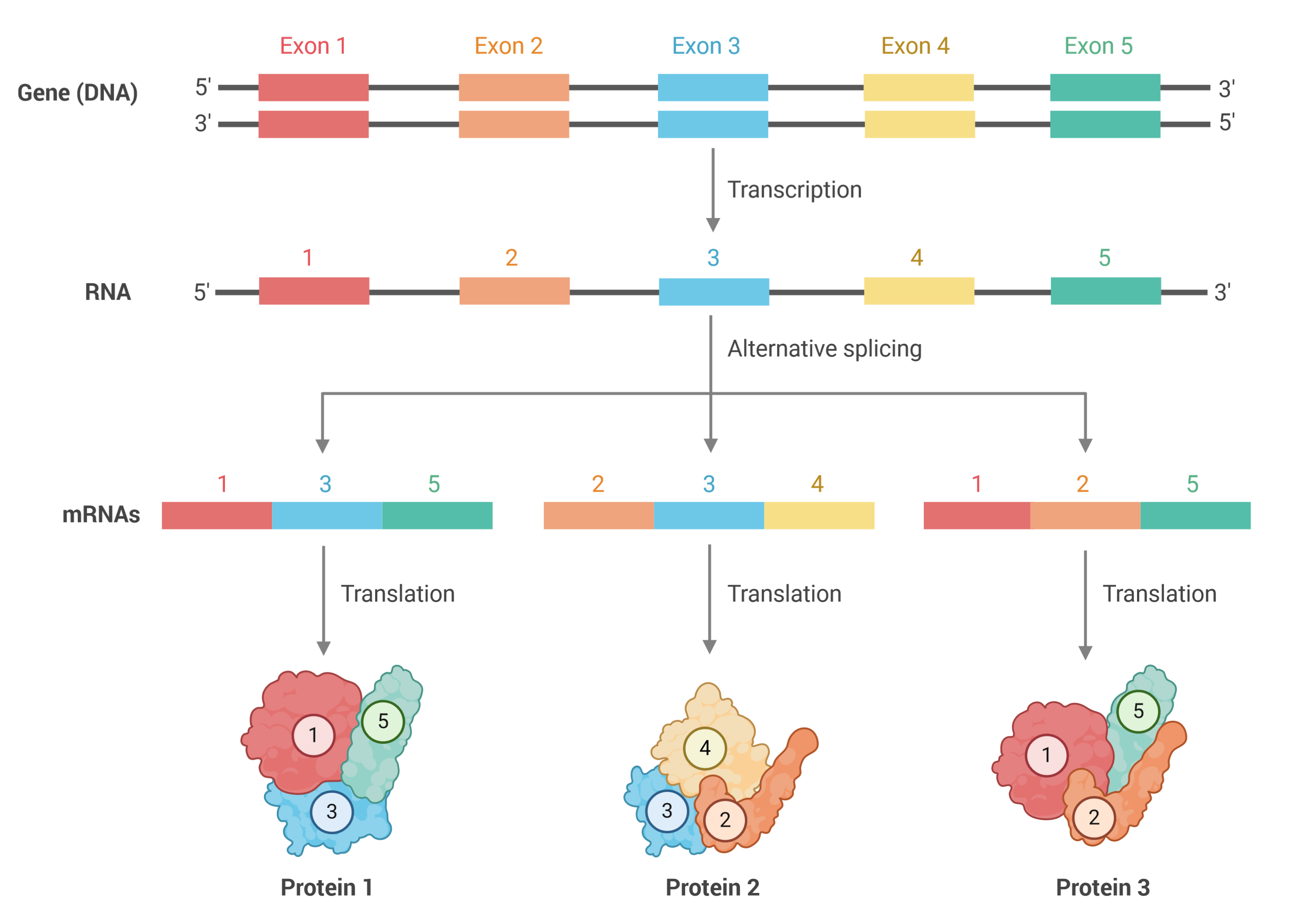
- Amino acid
-
Amino acids are the building blocks that make up proteins. Each protein is coded by a protein-coding gene. When a gene (DNA) is transcribed into mRNA, the code is read in groups of three nucleotides, called a codon. Each codon codes for an amino acid. There are 20 different amino acids that make up the proteins in our bodies.
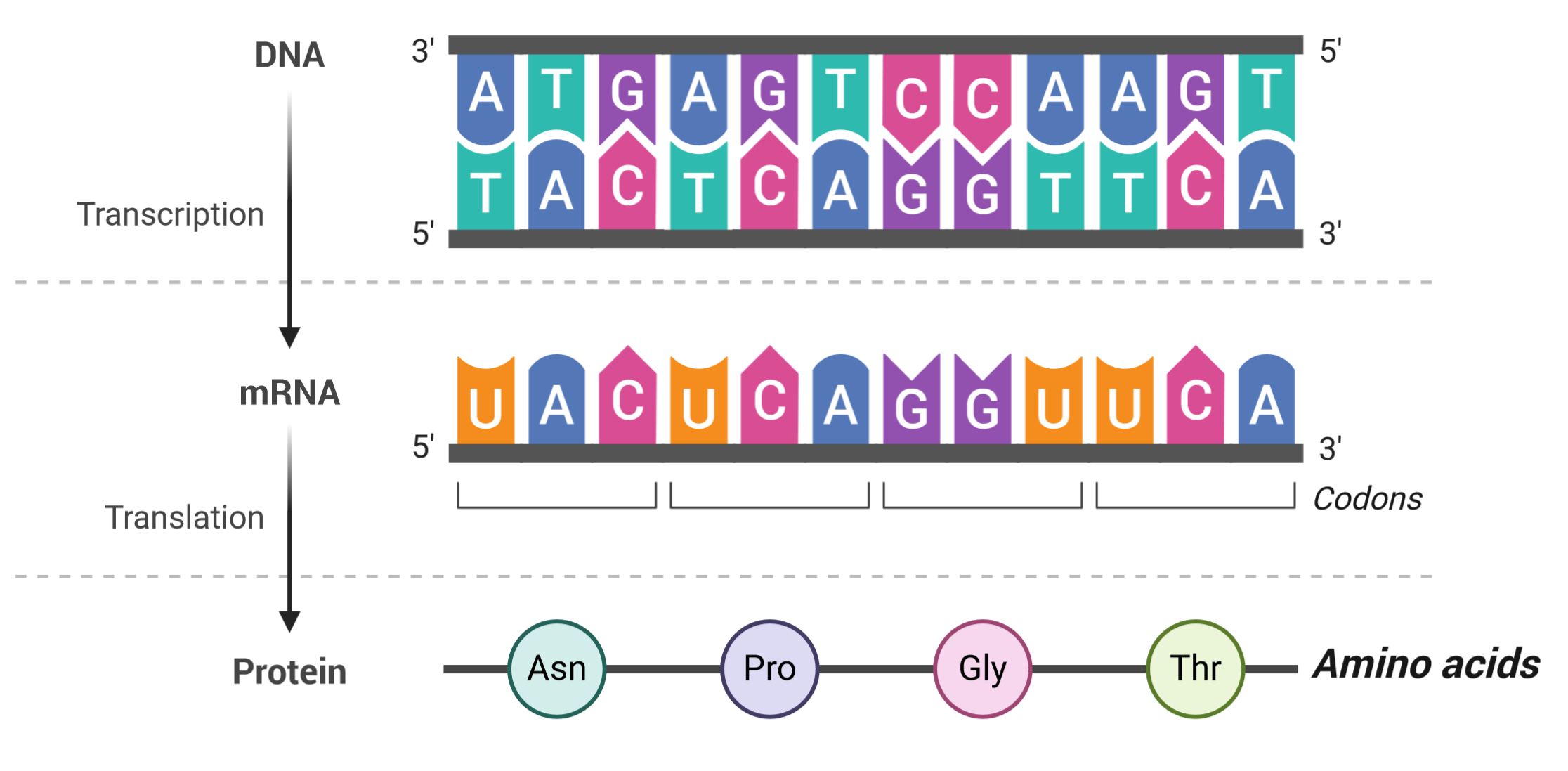
- Autosome
-
An autosome is any chromosome that is not a sex chromosome. Humans have 23 pairs of chromosomes—22 pairs of autosomes and one pair of sex chromosomes (X chromosome and Y chromosome).
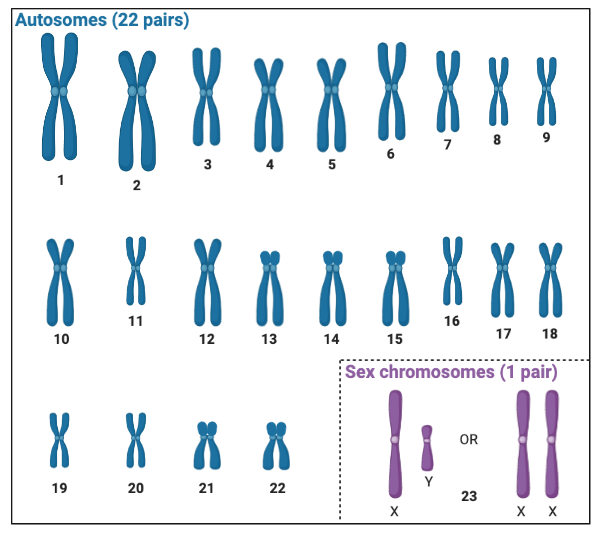
- Base pair
-
A base pair is formed when two nucleotides, the building blocks of DNA, form bonds with each other to hold the two strands of the DNA double helix together. Base pairs form between complementary nucleotides: Adenine (A) forms base pairs with Thymine (T) and Uracil (U) and DNA and RNA, respectively, while Cytosine (C) forms base pairs with Guanine (G).
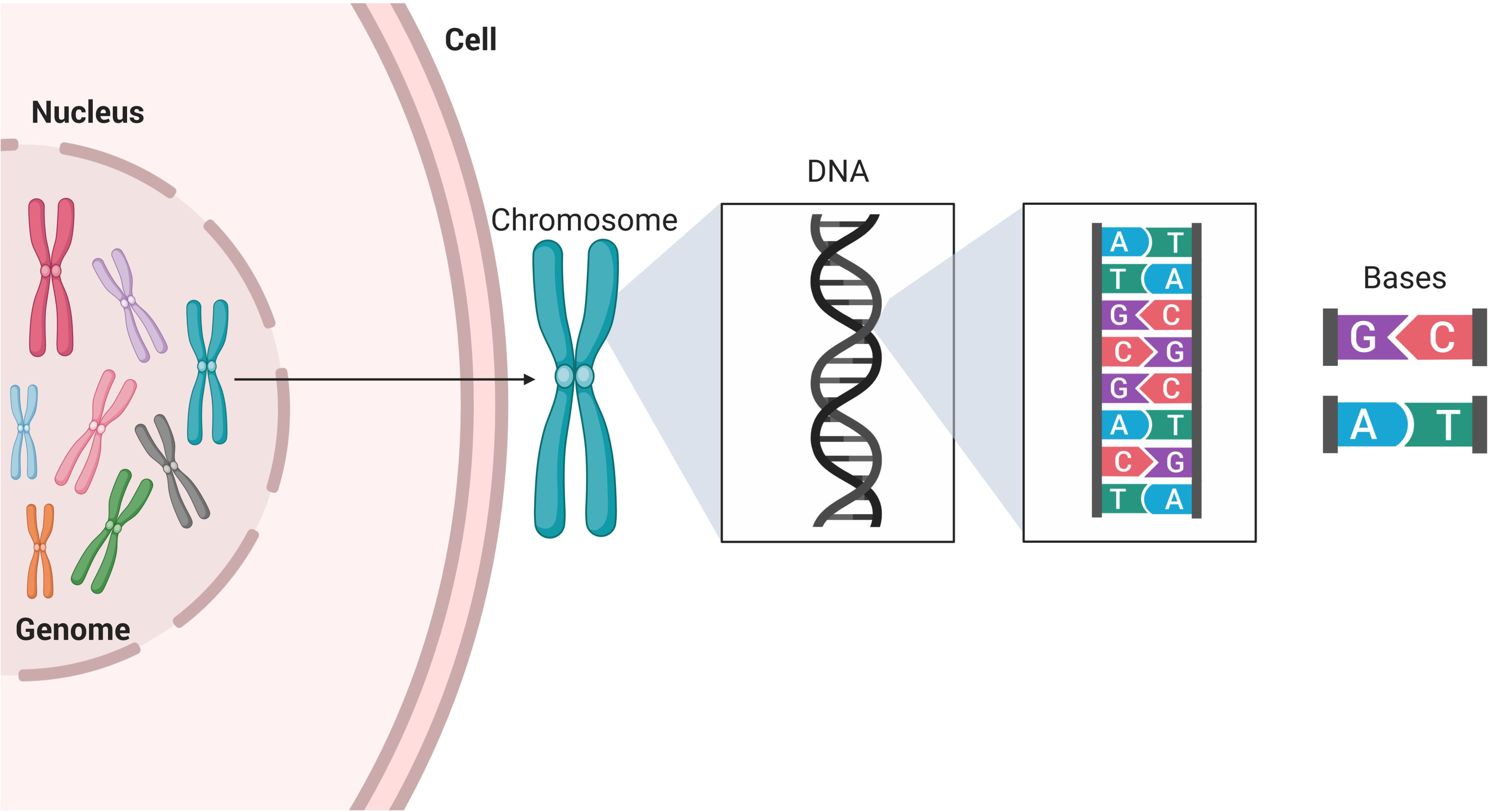
- Bioinformatics
-
Bioinformatics is an interdisciplinary field that develops methods and software tools for understanding biological data, in particular when the data sets are large and complex.
- Biomarker
-
In medicine, a biomarker is a measurable indicator of the severity or presence of some disease state. More generally a biomarker is anything that can be used as an indicator of a particular disease state or some other physiological state of an organism.
- BRCA1/BRCA2
-
BRCA1 and BRCA2 are human genes that code for tumour suppressor proteins which help repair damaged DNA, helping to maintain the stability of each cell’s genetic material. When either of these genes is mutated, leading to a protein product that is either not made at all or does not function properly, the cell cannot repair DNA damage effectively. Cells with mutations in these genes are prone to genetic alterations that can lead to cancer.
- Cancer
-
Cancer is the result of DNA mutations which cause cells divide uncontrollably and spread into surrounding tissues.
- Carrier
-
An individual that has inherited a gene or mutation associated with a particular trait or disease, but usually does not display that trait or show symptoms of the disease.
- Cell
-
The smallest structural and functional unit of an organism, typically microscopic and consisting of cytoplasm and a nucleus enclosed in a membrane.
- Cellular Differentiation
-
A complex multistep biological process by which a cell turns into a different, more specialized, type of cell. However, not every cell has the same ability to differentiate. For instance, some cells called pluripotent stem cells can turn into almost every cell of the body, while neurons, for example, are terminally specialized cells that can no longer differentiate.
- Chemotherapy
-
A type of cancer treatment that uses one or more anti-cancer drug(s) to target and eliminate cancerous cells.
- Chromatin
-
A complex of DNA and protein found in the cell’s nucleus. The DNA carries the cell’s genetic information while the proteins, called histones, help package, organize and regulate the genetic material.
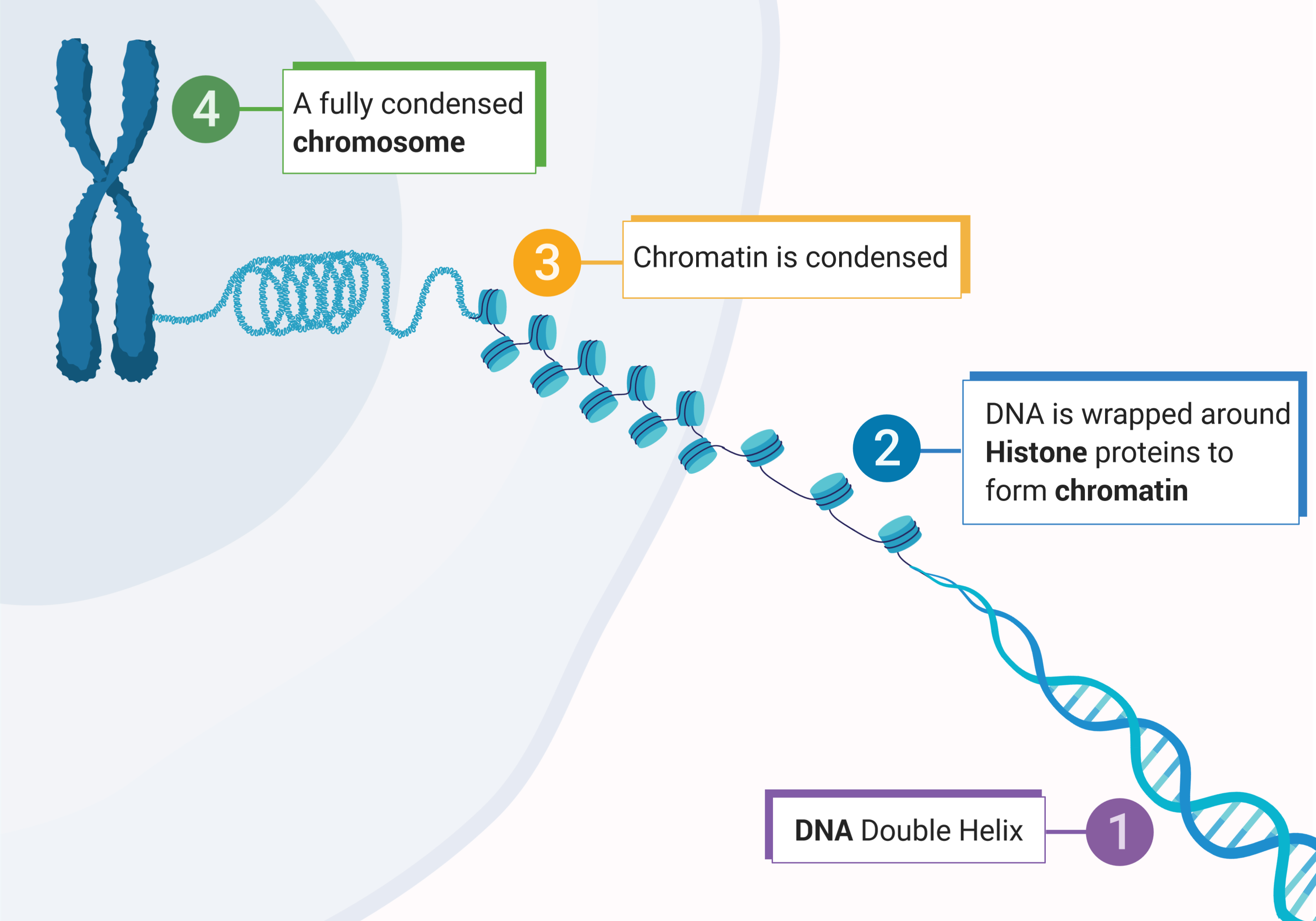
- Chromosome
-
A long piece of DNA containing part or all of the genetic material, or genome, of an organism. Human genomes are made up of 23 pairs of chromosomes to give 46 chromosomes total.
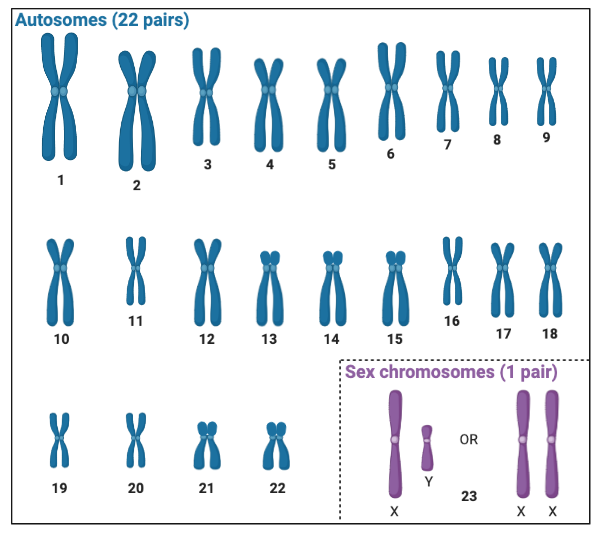
- Clinical trail
-
Once scientists have demonstrated the potential of a particular medical intervention in the laboratory setting, a clinical trial is done to find out whether these promising approaches to disease prevention, diagnosis and treatment are safe and effective when used on patients.
- Codon
-
During protein synthesis (translation), the mRNA is read in groups of three bases, called codons, that “code” for a particular amino acid in the protein product. There are 64 three-letter codons that together code for the 20 amino acids that make up proteins.
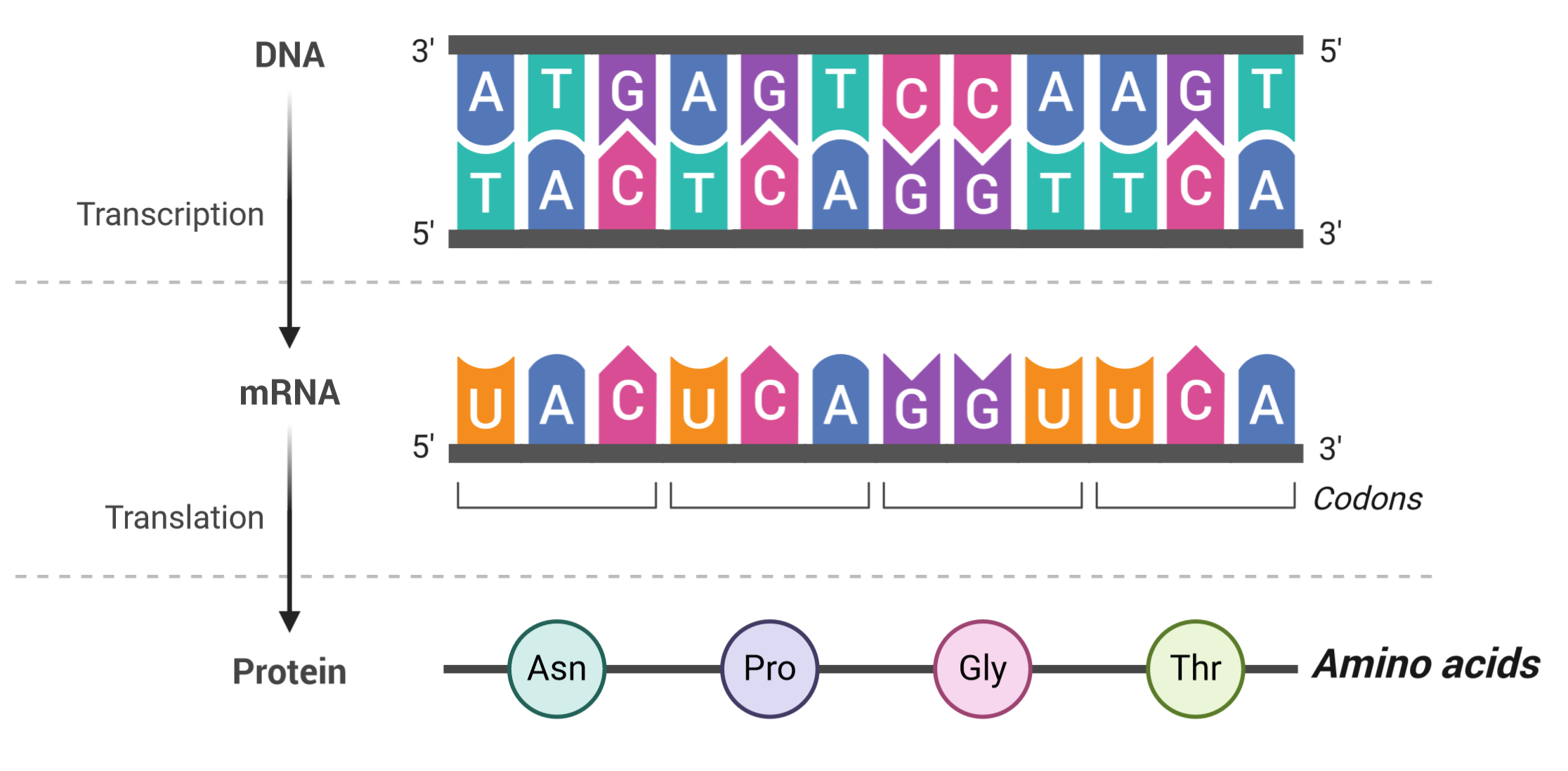
- Complementary
-
A property of nucleotides, whereby Adenine (A) always pairs with Thymine (T) or Uracil (U) in DNA and RNA, respectively, while Cytosine (C) always pairs with Guanine (G). The DNA double helix is made up of two strands of DNA held together by complementary base pairs.
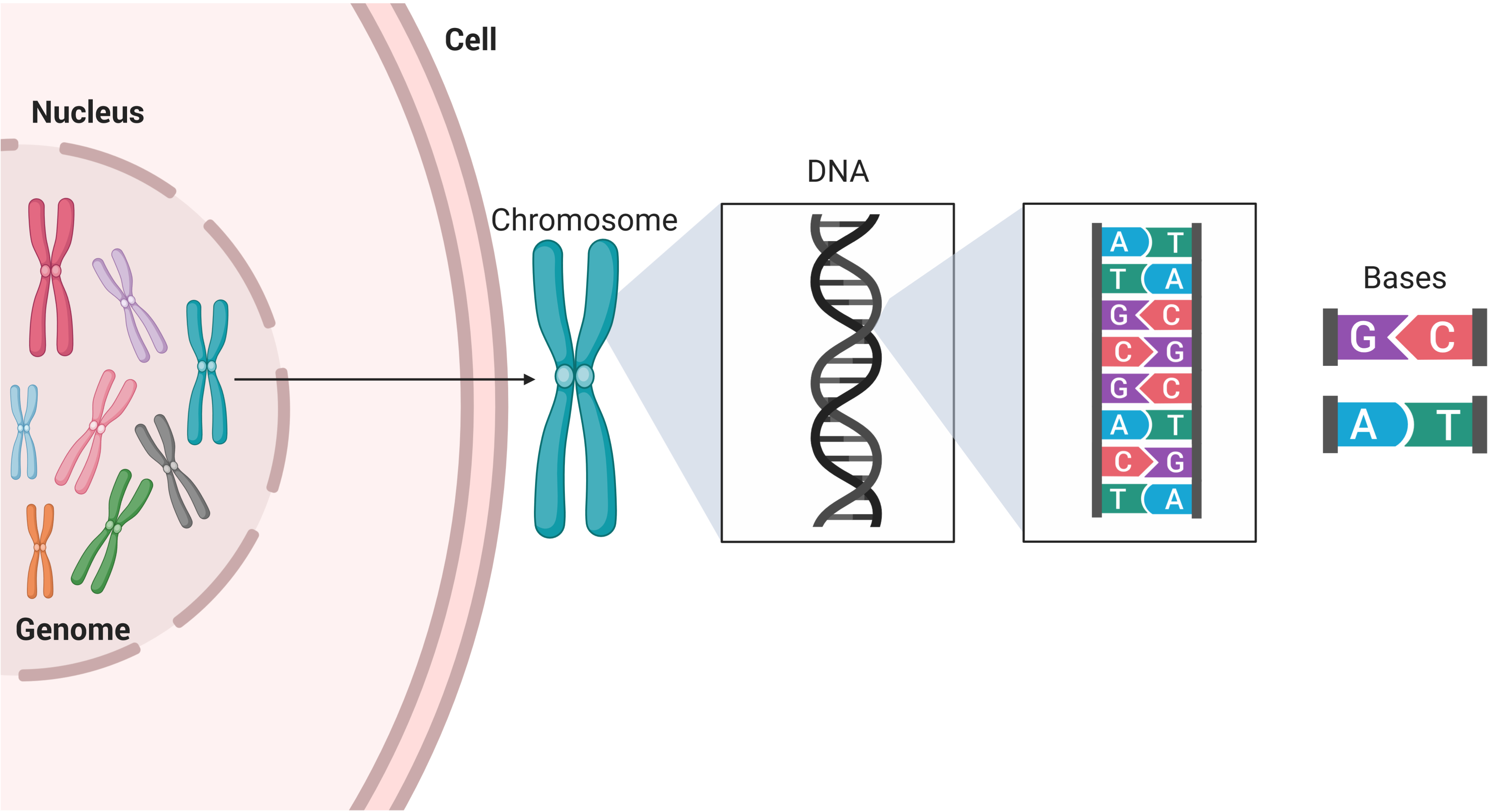
- Copy number variation
-
A copy number variation (CNV) is when the number of copies of a gene differs from one individual to the next. CNVs occur when sections of the genome are repeated, and the number of repeats varies between individuals. CNVs can occur due to duplication or deletion events in the genome.
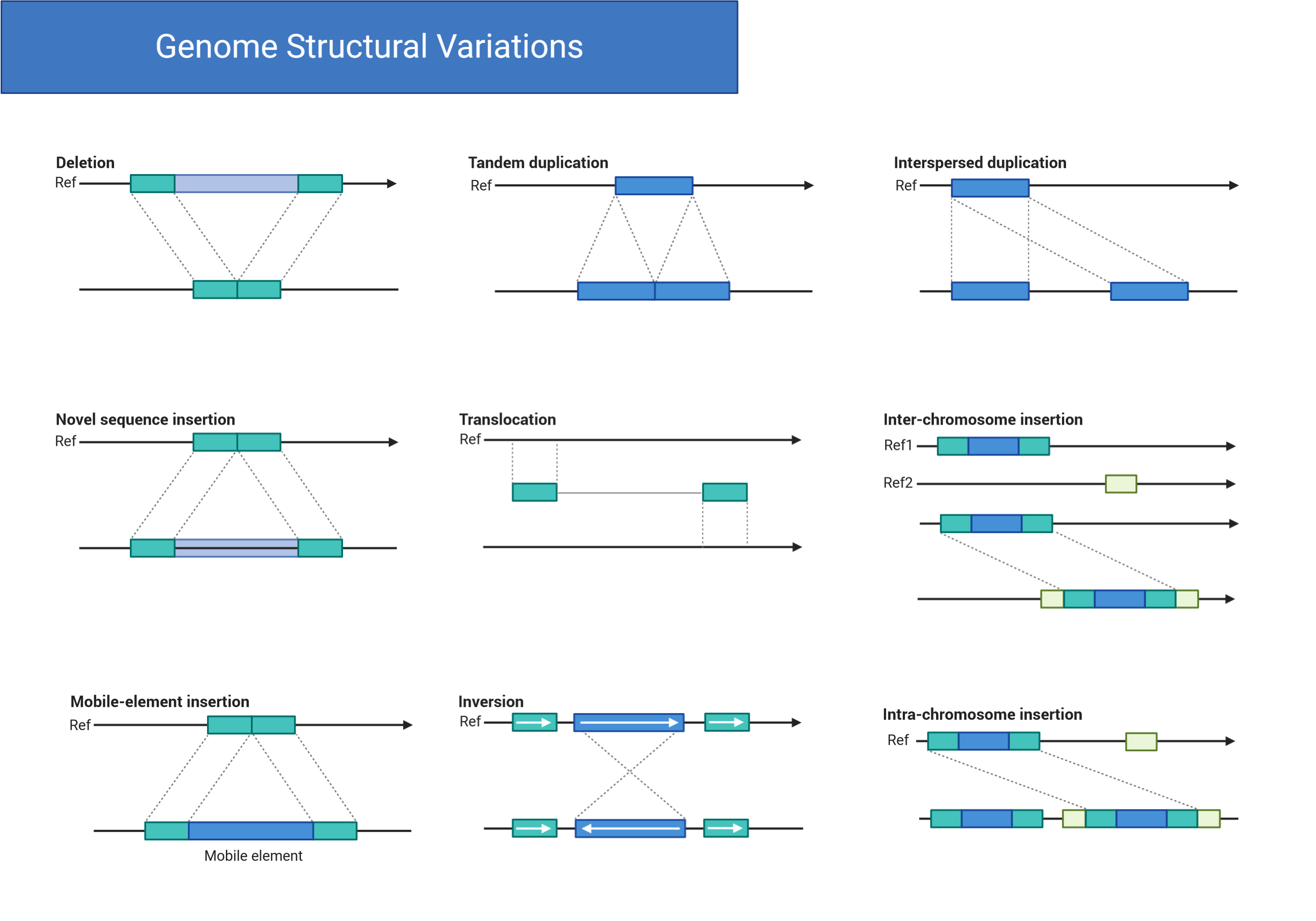
- Deletion
-
A genetic mutation in which a part of a chromosome, ranging from a single base pair to a large piece of chromosome, is left out during DNA replication. This leads to a cell in which a portion of the genome is missing.
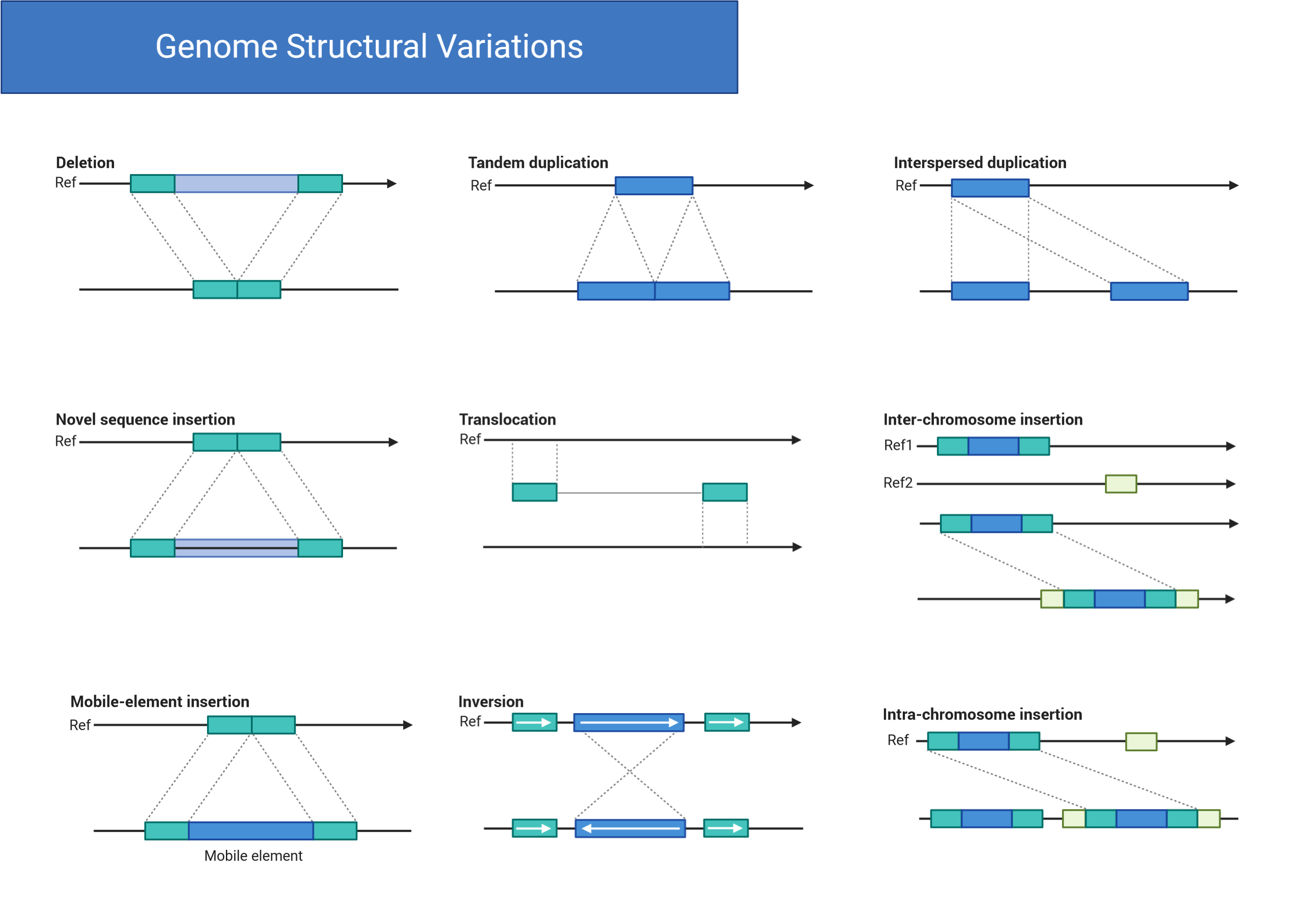
- Deoxyribonucleic acid (DNA)
-
DNA, which stands for deoxyribonucleic acid, is the biological molecule that codes for a living organism. DNA is a nucleic acid—a long chain of nucleotides. The DNA double helix is composed of two strands of nucleotides paired together by complimentary base pairs.
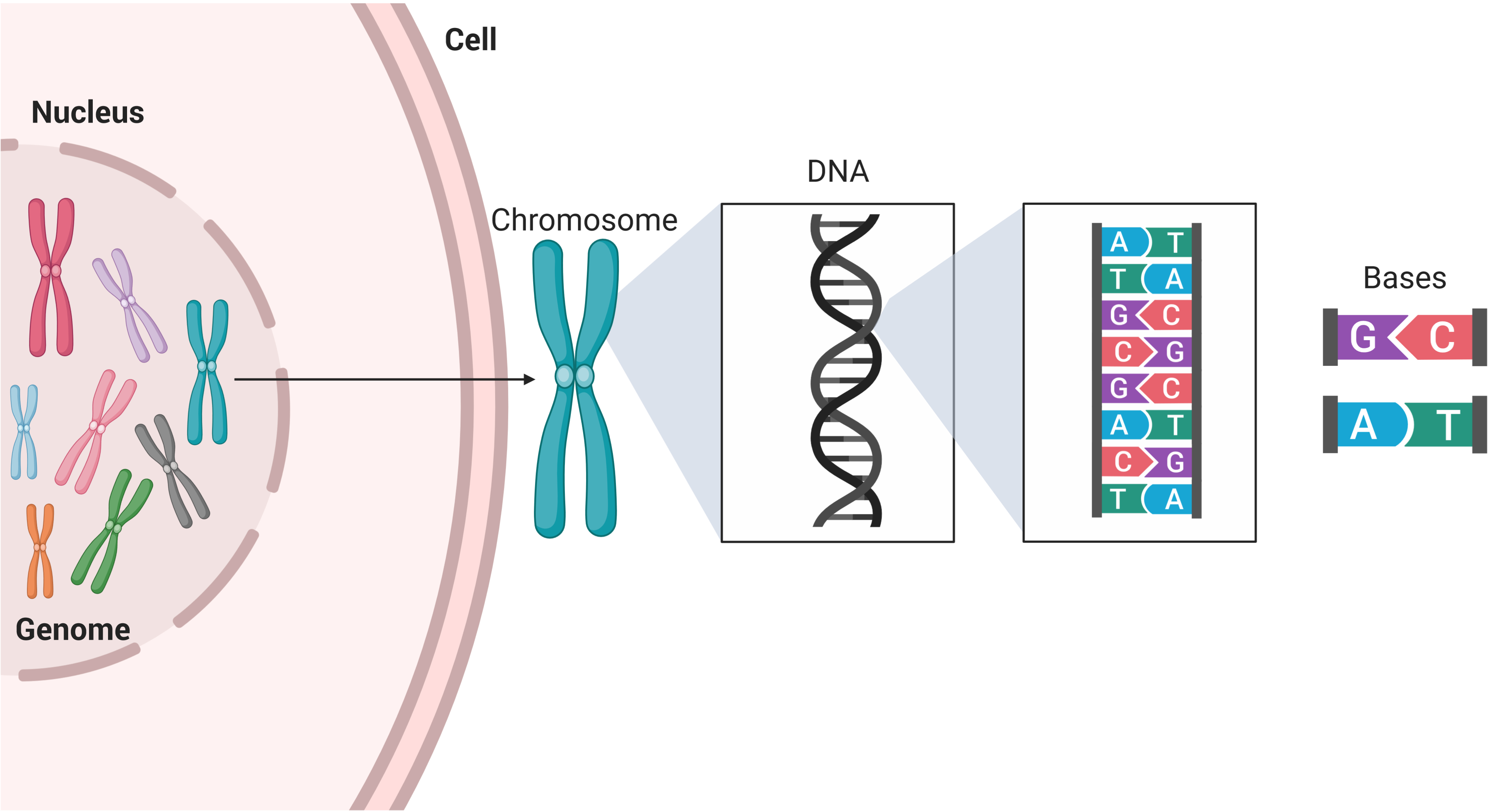
- DNA Methylation
-
An epigenetic process in which biochemicals, called methyl groups, are added onto Cytosine (C) nucleotides in the promoter region of a gene. The addition or removal of methyl groups regulates gene expression.
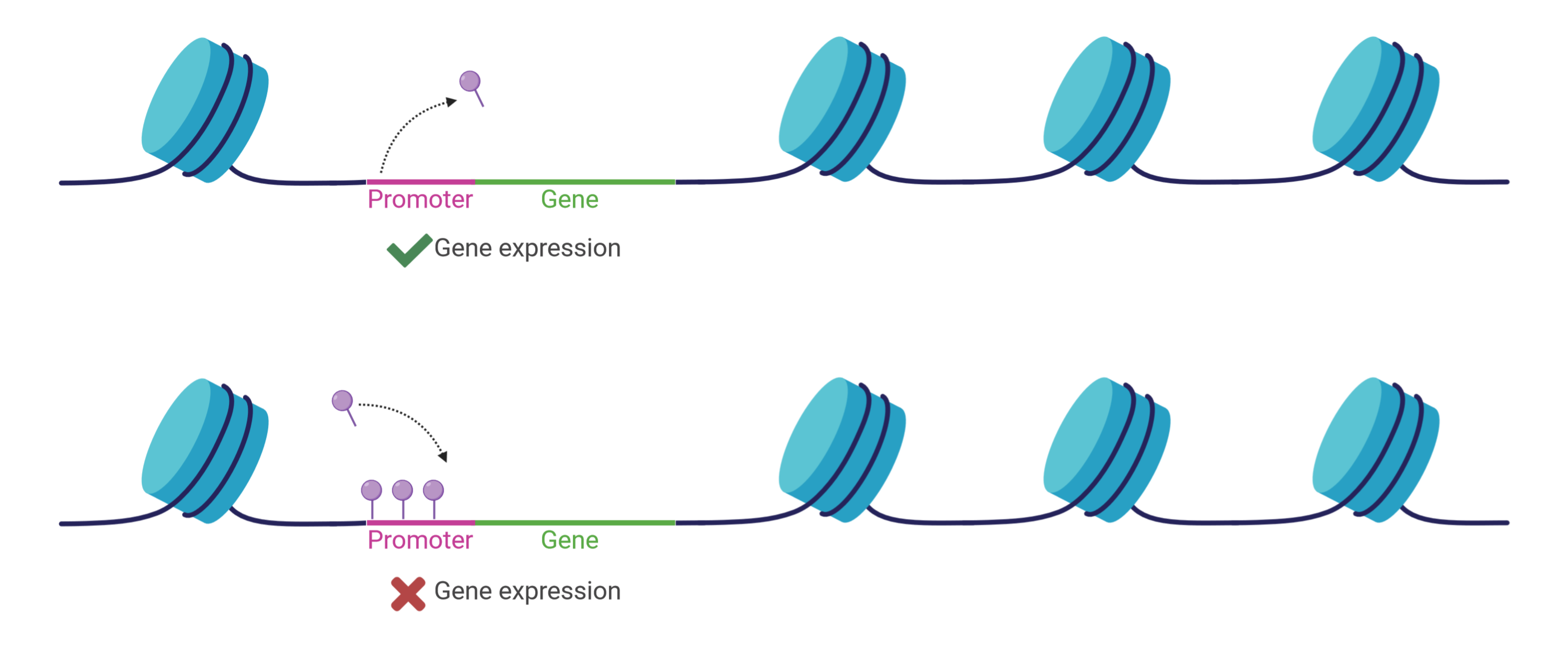
- DNA Sequencing
-
The process of determining the order of nucleotides in DNA. It can be used to identify genetic mutations present in the DNA of an individual or in a cancer sample.

- Driver mutation
-
A genetic mutation that gives cancer cells a growth advantage, leading to rapid reproduction and growth.
- Drug target
-
A biological molecule that has been shown to be critical for development of a disease. Scientists aim to develop drugs that block this molecule in order to treat or prevent disease.
- Duplication
-
A type of genetic mutation that involves the duplication of one or more copies of a gene or region of a chromosome.
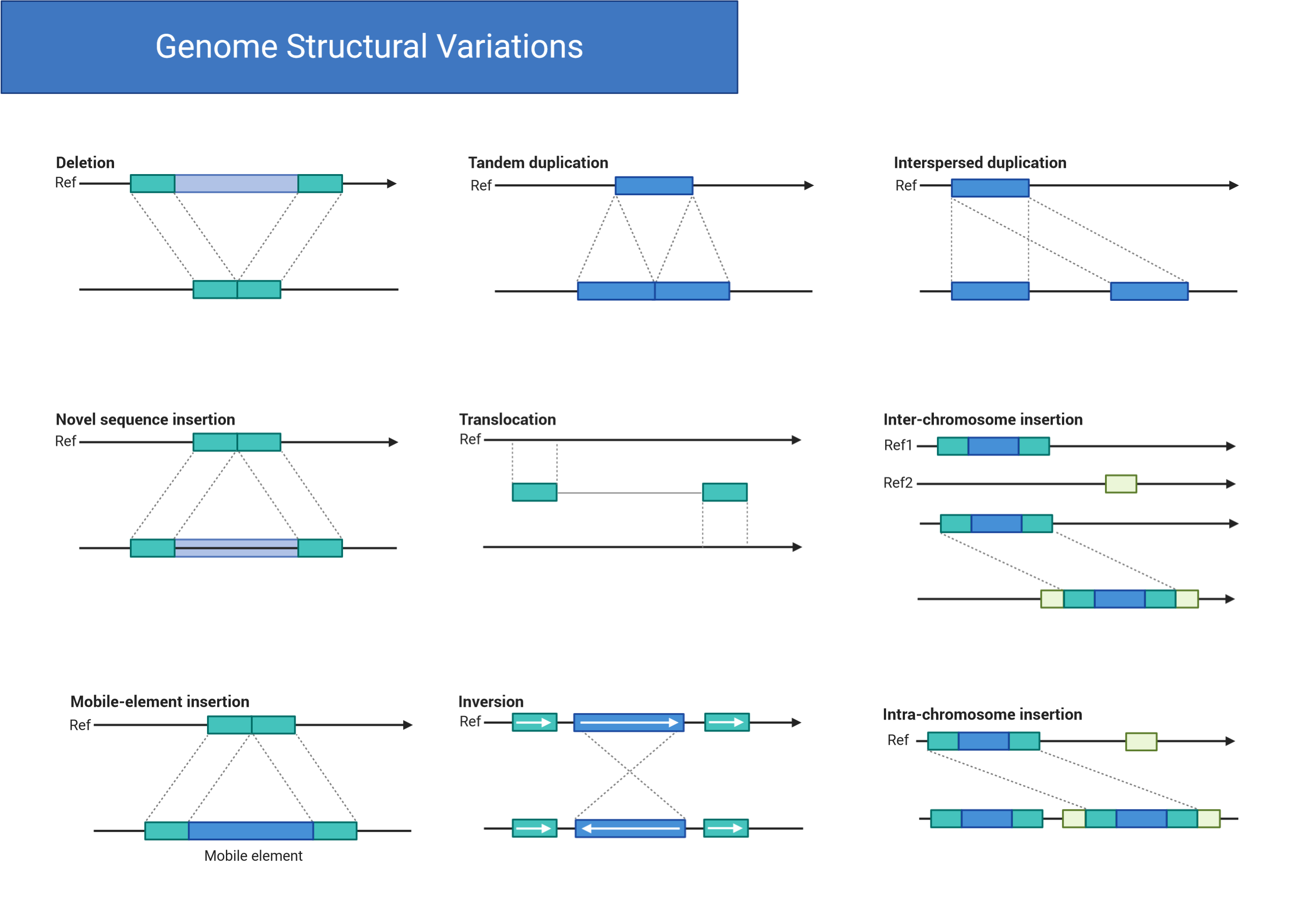
- Enzyme
-
A protein that acts as a biological catalyst. Enzymes speed up biochemical reactions by converting one molecule, called a substrate, into a product. To date, there are approximately 75,000 different enzymes that catalyze reactions in the human body.
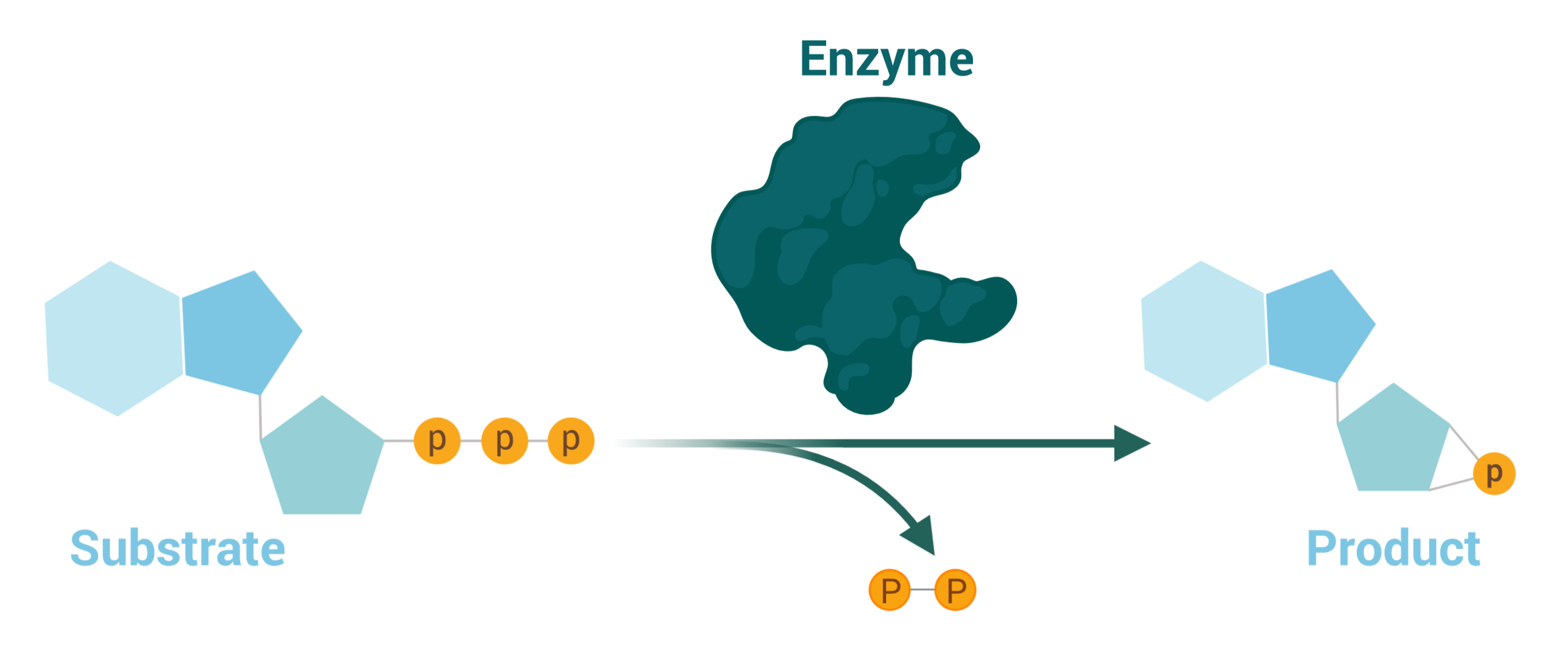
- Epigenetics
-
The study of biochemical modifications to the genome, either to the DNA itself through DNA methylation, or to the DNA packaging proteins called histones, to regulate gene expression.
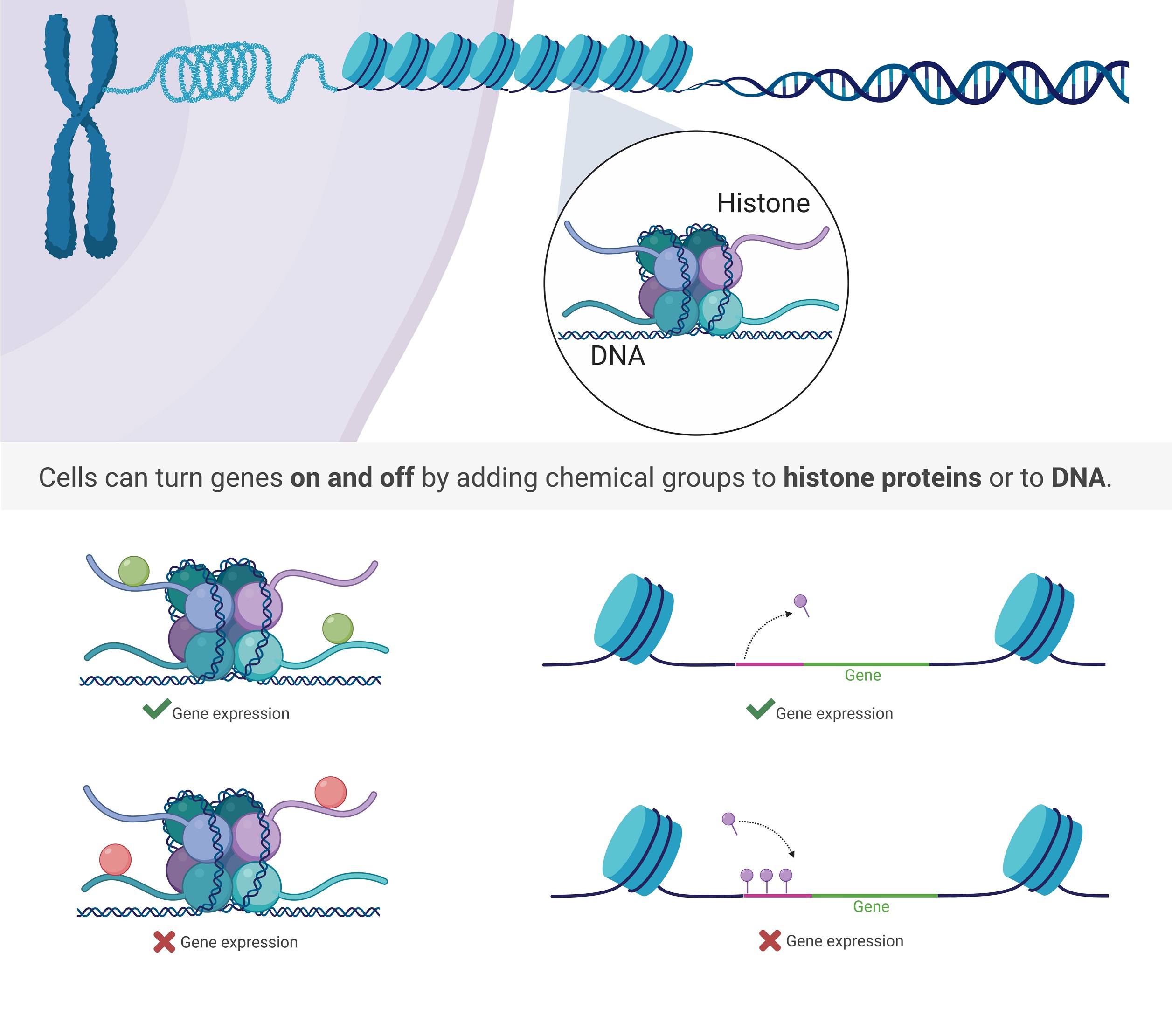
- Epigenome
-
The complete set of epigenetic modifications in a cell, tissue, organisms or sample.
- Epigenomics
-
The study of the complete set of epigenetic modifications in an organism’s genome.
- Epigenetic reprogramming
-
Dynamic and extensive changes in the epigenome resulting in altered chromatin structure and gene transcription. Two major epigenetic reprogramming events occur in mammalian development during gametogenesis and early embryogenesis.
- Epimutation
-
An alteration in an epigenetic mark.
- Exome sequencing
-
Exome sequencing, also known as whole exome sequencing (WES) is a DNA sequencing technique focused on the portion of the genome that codes for proteins, known as the exome. The exome comprises only 1% of the genome.
- Gene
-
The basic physical and functional unit of heredity. A gene is a sequence of DNA that codes for a product, either a functional RNA molecule or a protein.
- Gene expression
-
When a gene is expressed, it is read by the cell through a process called transcription to produce an RNA molecule. If the gene codes for a protein, the RNA molecule will be translated to produce a protein product. Because not all gene products are required by every cell in an organism (e.g. brain cells do not require the same gene products as a stomach cell), gene expression can be turned on and off, or the level of gene expression can be regulated, through epigenetic processes.
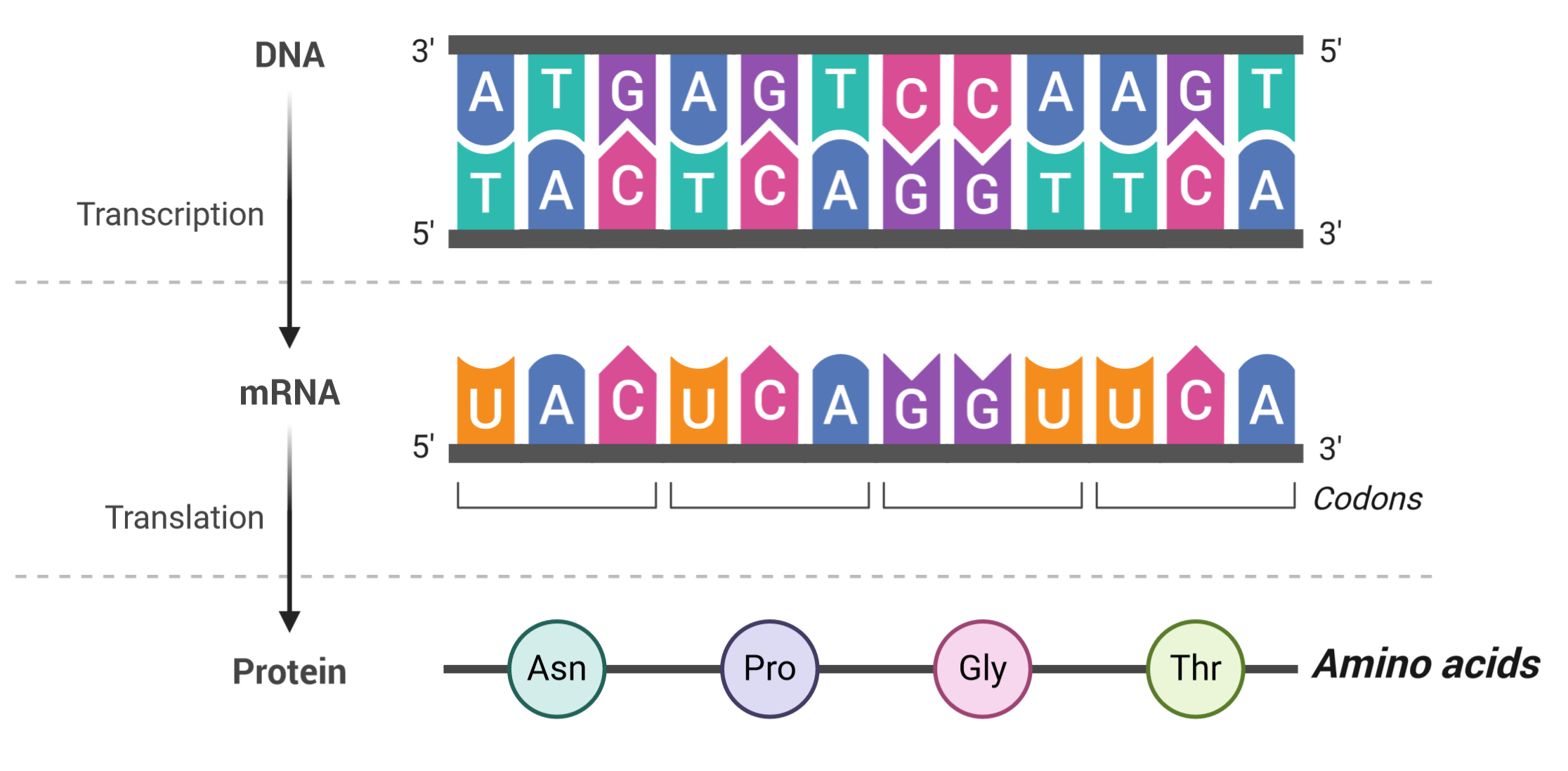
- Genome
-
The complete set of DNA of an organism. The human genome is comprised of 23 pairs of chromosomes and approximately three billion base pairs.
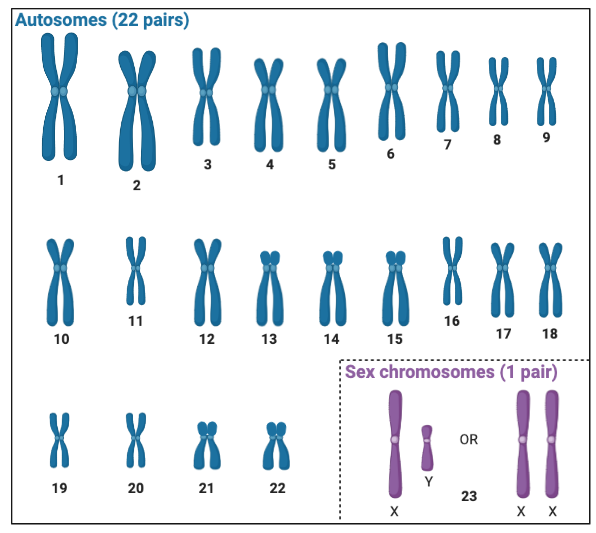
- Genomics
-
A branch of biological science focused on understanding the sequence, structure, function and evolution of the genomes of organisms or populations of organisms. Fields that interface and are often included within the field of genomics include bioinformatics, epigenetics, epigenomics, metabolomics, proteomics and transcriptomics.
- Genomic imprinting
-
Epigenetic signatures, mainly of DNA methylation, acquired in a parent-of-origin manner. Imprinted genes will possess different DNA methylation patterns on the maternal and paternal copies causing each copy to be differentially expressed.

- Germline
-
A subset of cells in an organism that give rise to reproductive (sperm or egg) cells. Mutations in the DNA of germline cells are therefore passed on to future generations. Non-germline cells are called somatic cells.
- Heritable
-
A genetic trait that can be inherited or passed on to future generations.
- Heterogeneous
-
An adjective that means composed of different components. In cancer biology, tumours are described as being a heterogenous mixture of cells—non-cancerous cells and cancerous cells with a variety of different genetic mutations.
- Histone
-
Proteins found in the nucleus of a cell around which DNA is wound. They function to package, condense and organize DNA so that it fits inside the nucleus, while also helping to regulate gene expression through epigenetic modification.
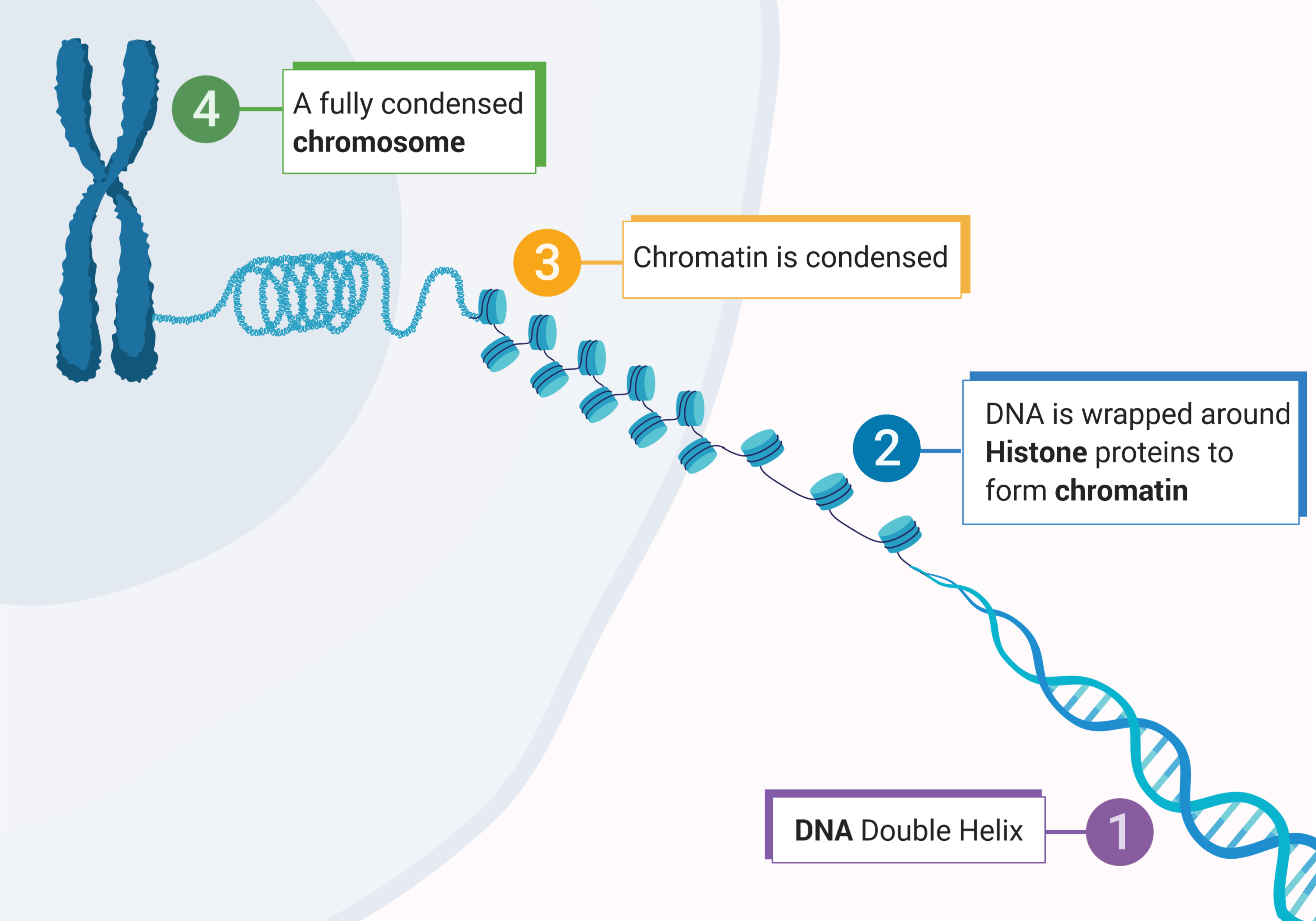
- Histone acetylation
-
The chemical process whereby histone acetyltransferase enzymes add an acetyl group to a specific lysine residue in the ‘tail’ of a histone protein.
- Histone deacetylases (HDACs)
-
Enzymes that remove acetyl groups from histone proteins.
- Histone methylation
-
The chemical process whereby histone methyltransferase enzymes add one, two or three methyl group to a specific lysine or arginine residue in the ‘tail’ of a histone protein.
- Inherited
-
A trait or gene that is passed down from parents to their offspring.
- In vivo
-
Performed or taking place in a living organism.
- Messenger RNA
-
An RNA molecule, called messenger RNA (mRNA), that is made during transcription of a gene. The mRNA carries the genetic code out of the nucleus and into the cytoplasm where it undergoes translation to produce a protein product.
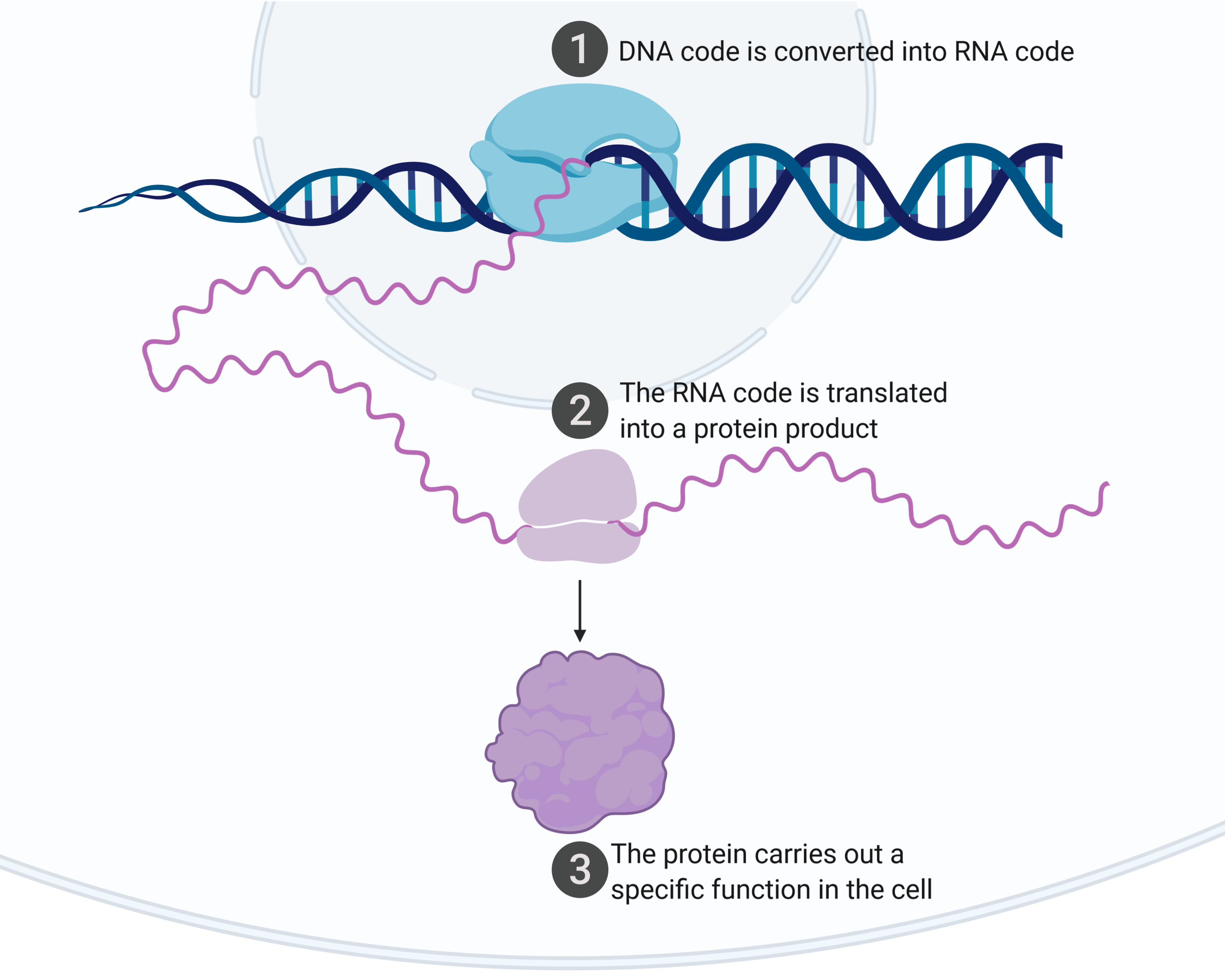
- Metastasis
-
The spread of cancer cells throughout the body.
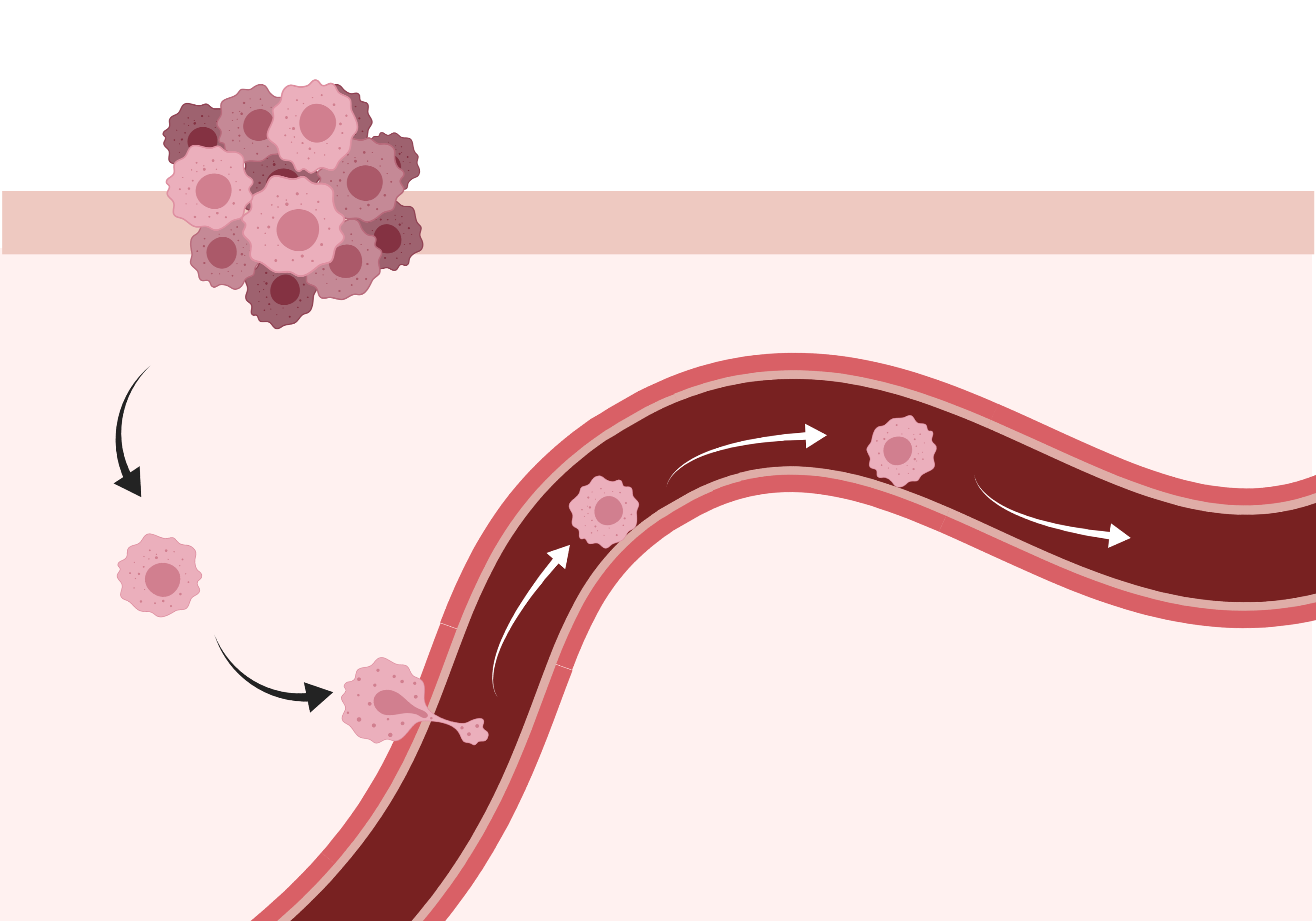
- MicroRNA
-
A microRNA is a small RNA molecule that functions in RNA silencing and post-transcriptional regulation of gene expression. Micro RNAs function by forming base pairs with complementary sequences within mRNA molecules.
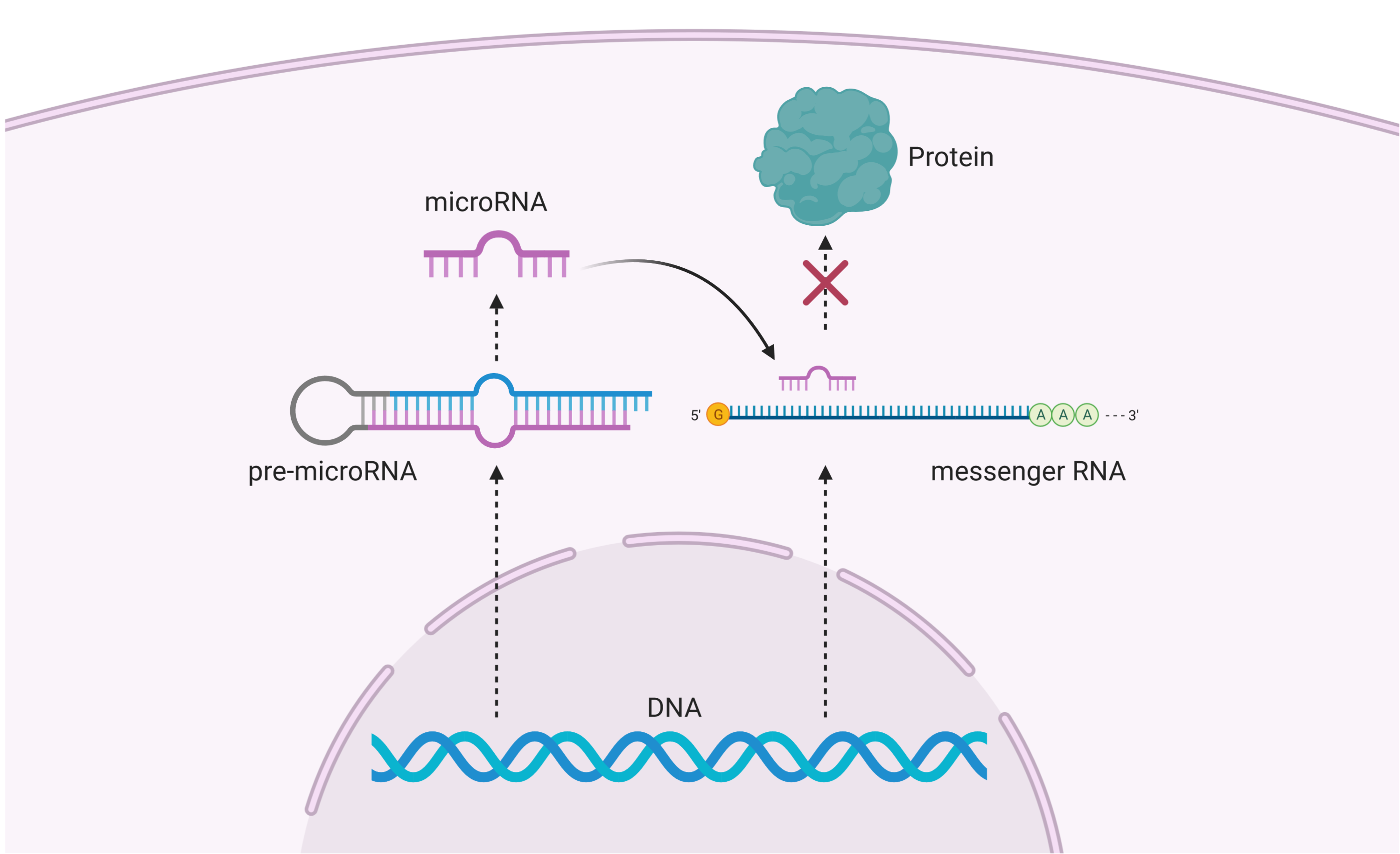
- Mutation
-
A change in the DNA sequence or a cell or organism.
- Nuceic acid
-
A long biomolecule made up of a chain of nucleotides. DNA and RNA are nucleic acids.
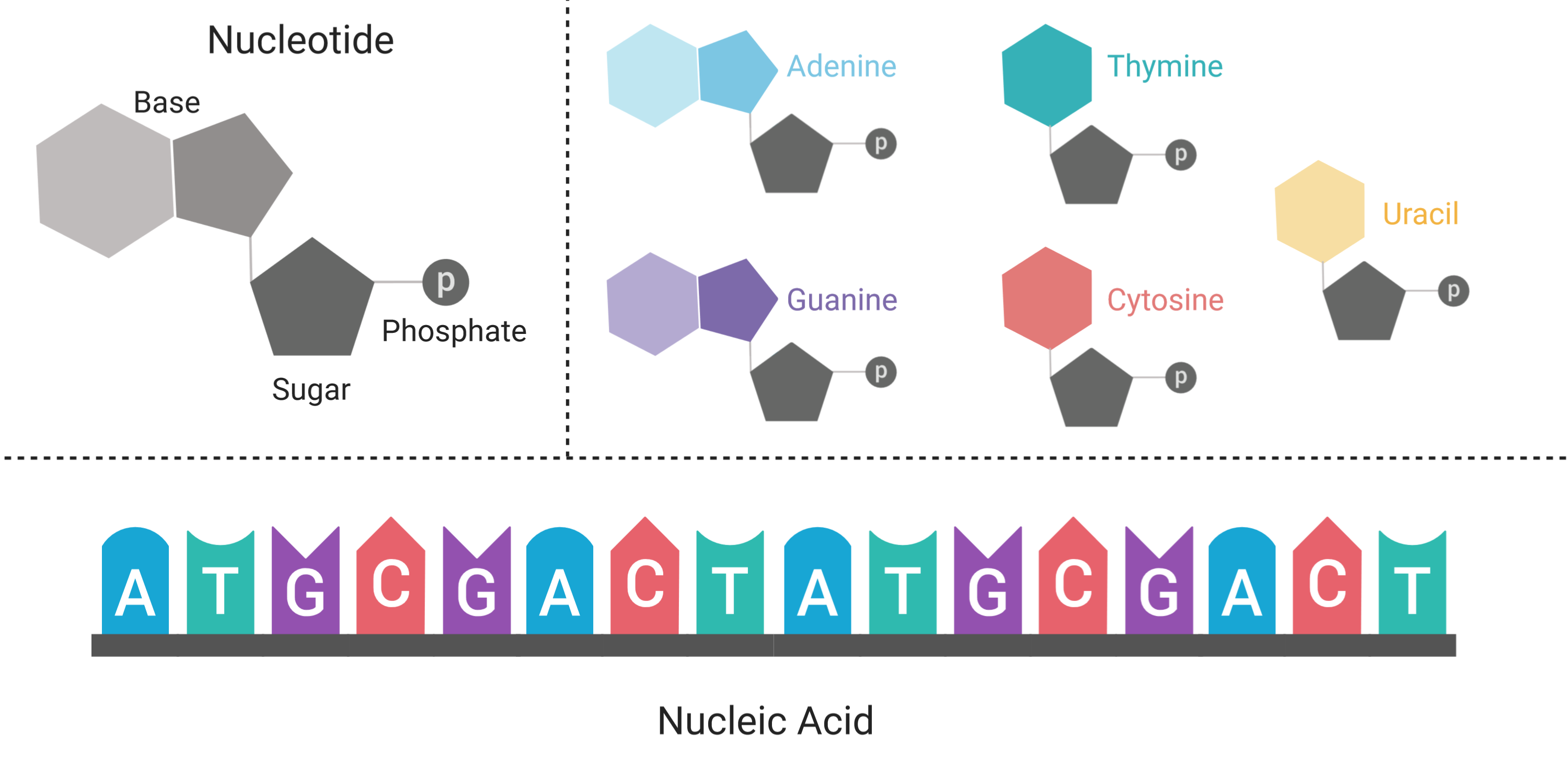
- Nucleotide
-
The building blocks of nucleic acids (e.g., DNA and RNA). Nucleotides are composed of three types of molecules: a sugar, a phosphate and a base. The base differs between nucleotides and are called Adenine (A), Thymine (T), Cytosine (C), Guanine (G) and Uracil (U).
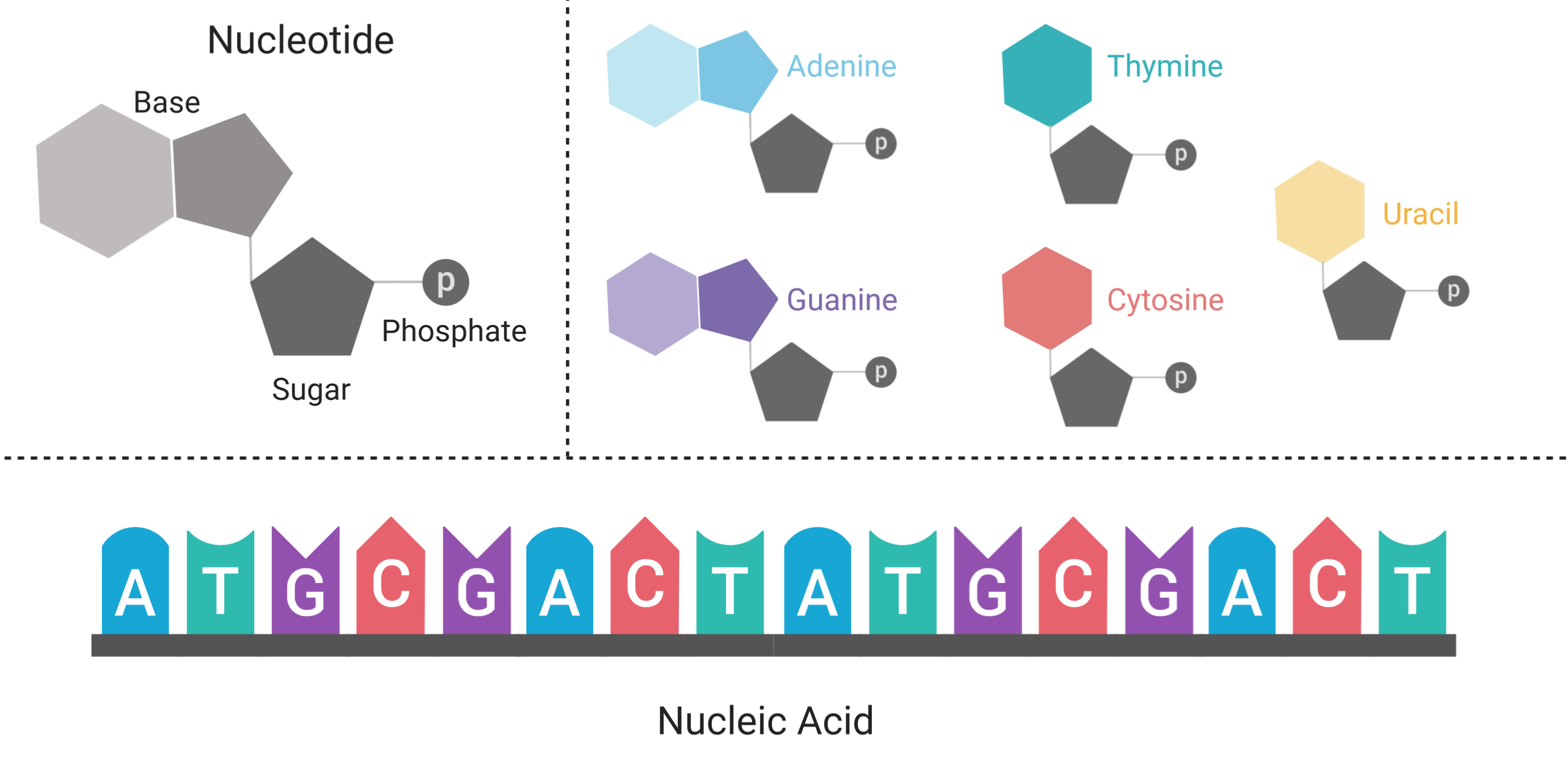
- Nucleus
-
A membrane-bound compartment in a cell containing the genetic material.
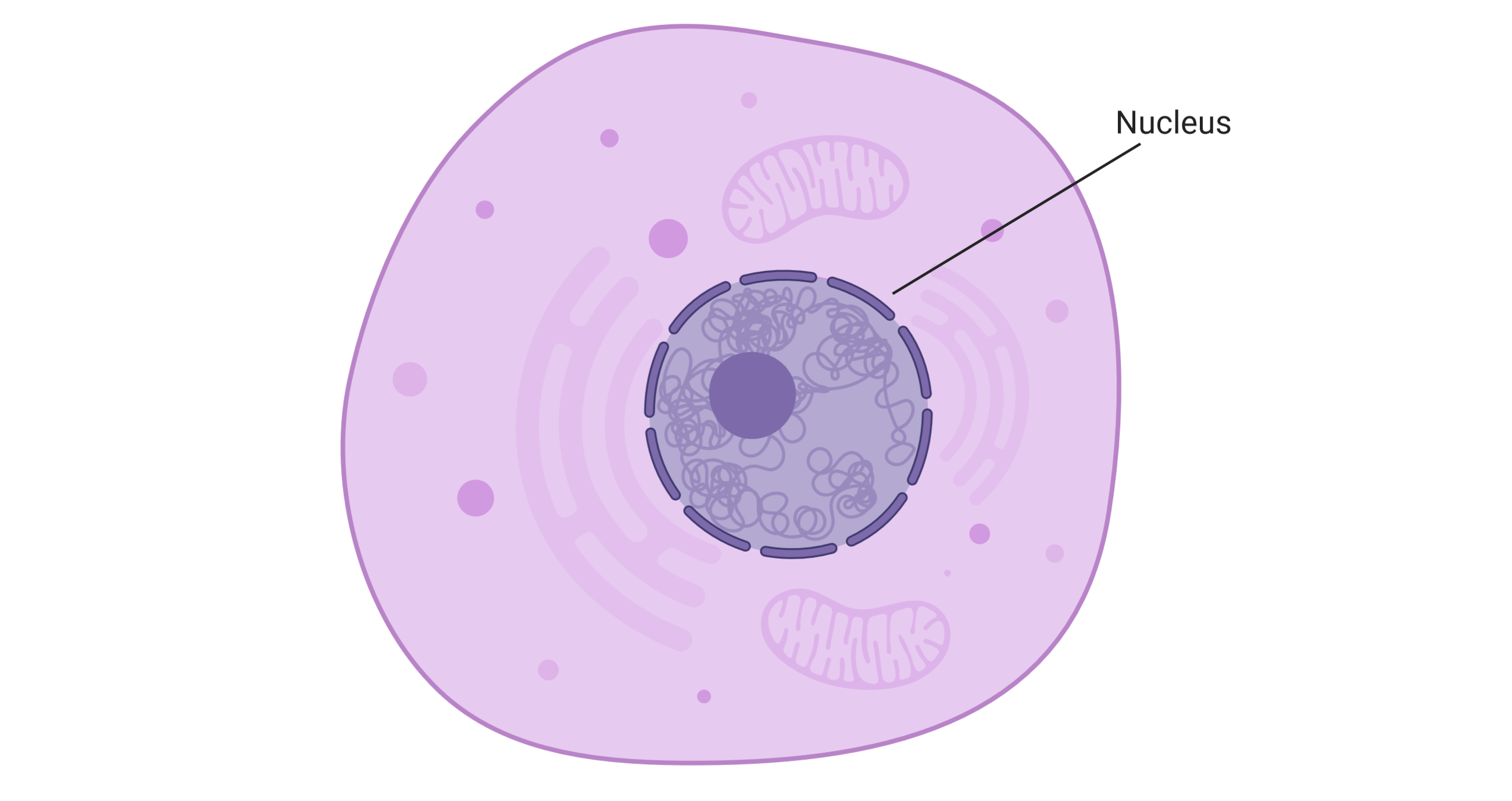
- Oncogene
-
A gene that, when mutated, has the potential to cause cancer.
- Penetrance
-
The proportion of individuals carrying a particular genetic variant who display a particular trait. In cancer genetics, penetrance refers to the likelihood that a disease or condition will occur when a particular genetic variant is present.
- Promoter
-
A region of DNA located just before the beginning of a gene. The promoter contains the DNA sequence that is required for the gene to be read (transcribed) and can be modified through epigenetics to regulate gene expression. Mutations in the promoter may cause dysregulation in gene expression and may lead to disease.
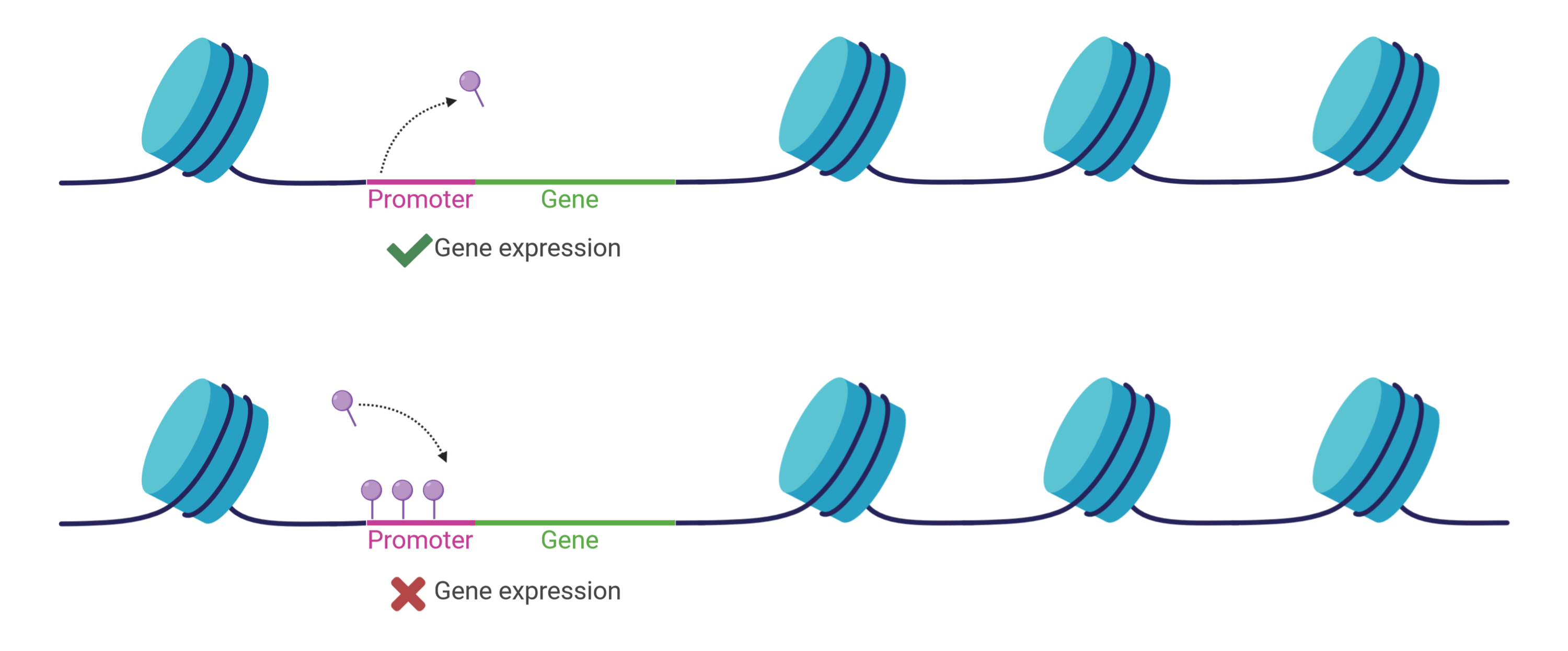
- Protein
-
A region of DNA located just before the beginning of a gene. The promoter contains the DNA sequence that is required for the gene to be read (transcribed) and can be modified through epigenetics to regulate gene expression. Mutations in the promoter may cause dysregulation in gene expression and may lead to disease.
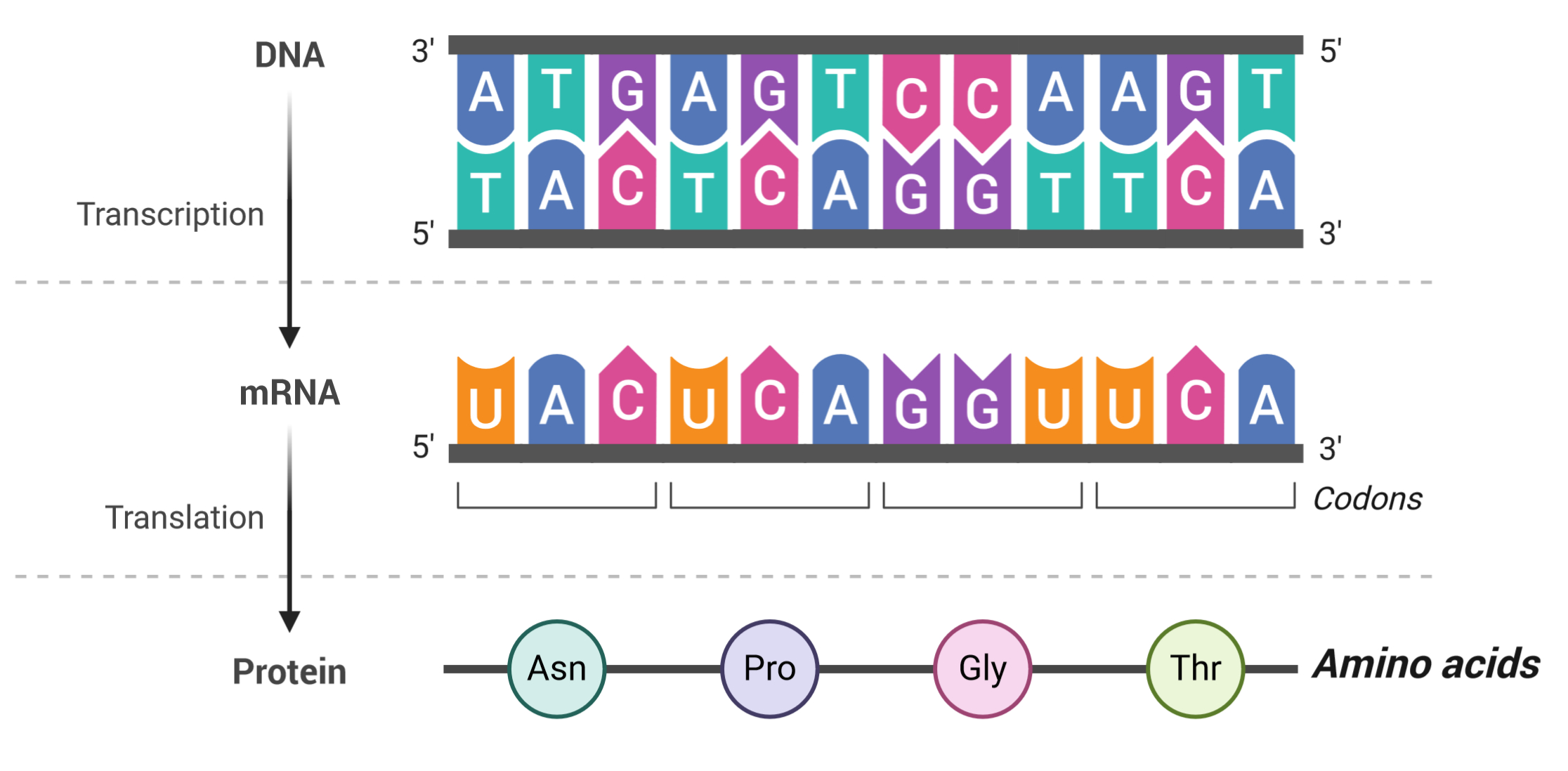
- Proteomics
-
A field of science which studies all of the proteins in a cell, tissue or organism. Proteomics can be used to determine which genes are expressed and when.
- Reward System
-
The reward system consists of the dopaminergic neurons in the midbrain ventral tegmental area, the nucleus accumbens, prefrontal cortex, hippocampus and basolateral amygdala.
- Ribonucleic acid (RNA)
-
RNA is a nucleic acid. Similar to DNA, it is composed of a long strand of nucleotides. RNA differs from DNA in the chemical structure of the nucleotide building blocks (DNA is made up of deoxyribonucleotides while RNA is made up of ribonucleotides). It also differs in function. While DNA carries the genetic information of the cell, RNA has various functions including production of a protein product through transcription and translation (mRNA), as a structural and functional component of ribosomes (rRNA) and a functional role in translation (tRNA).
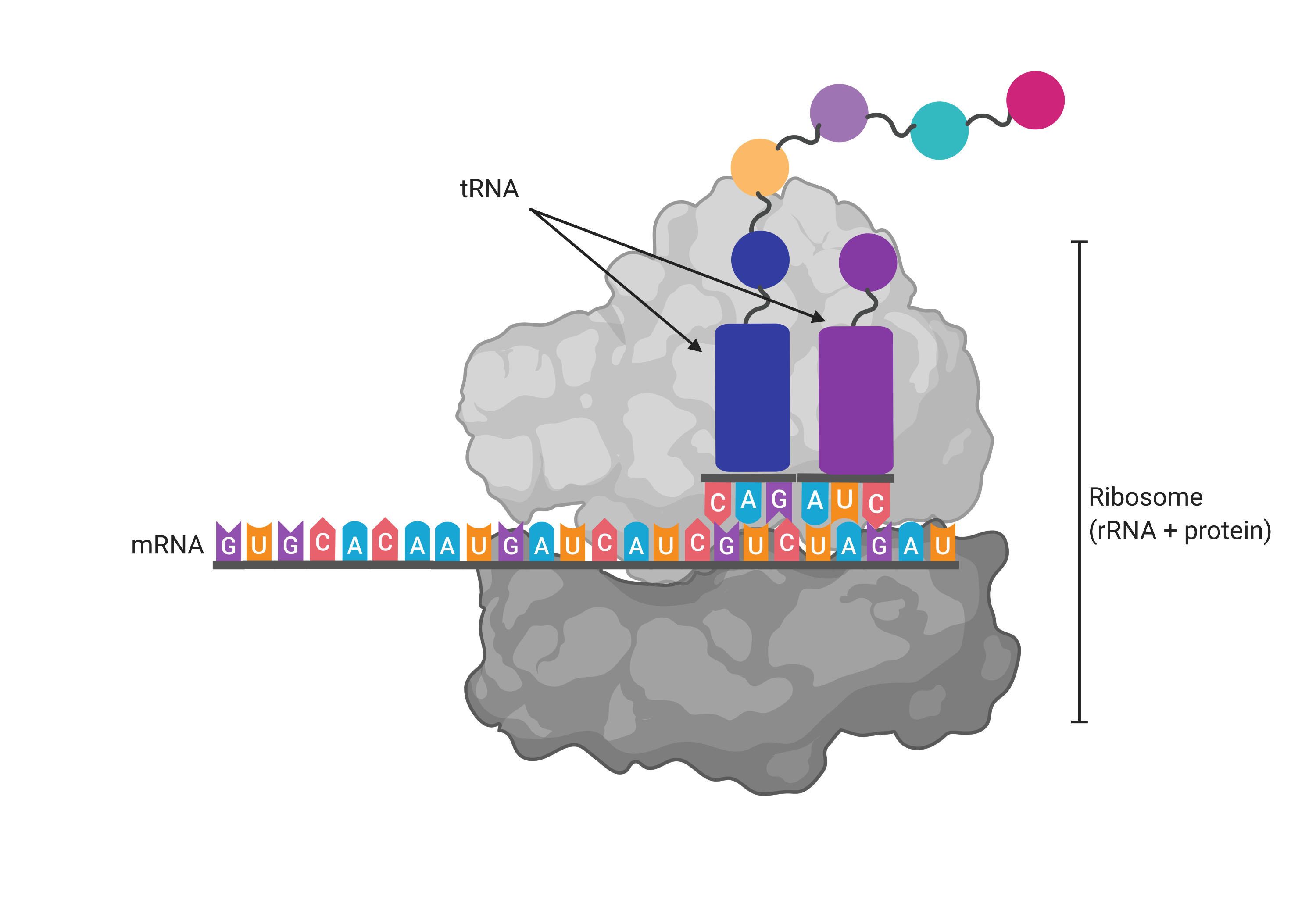
- Ribosomal RNA
-
RNA molecules that, along with ribosomal proteins, make up the structure and function of the ribosome.
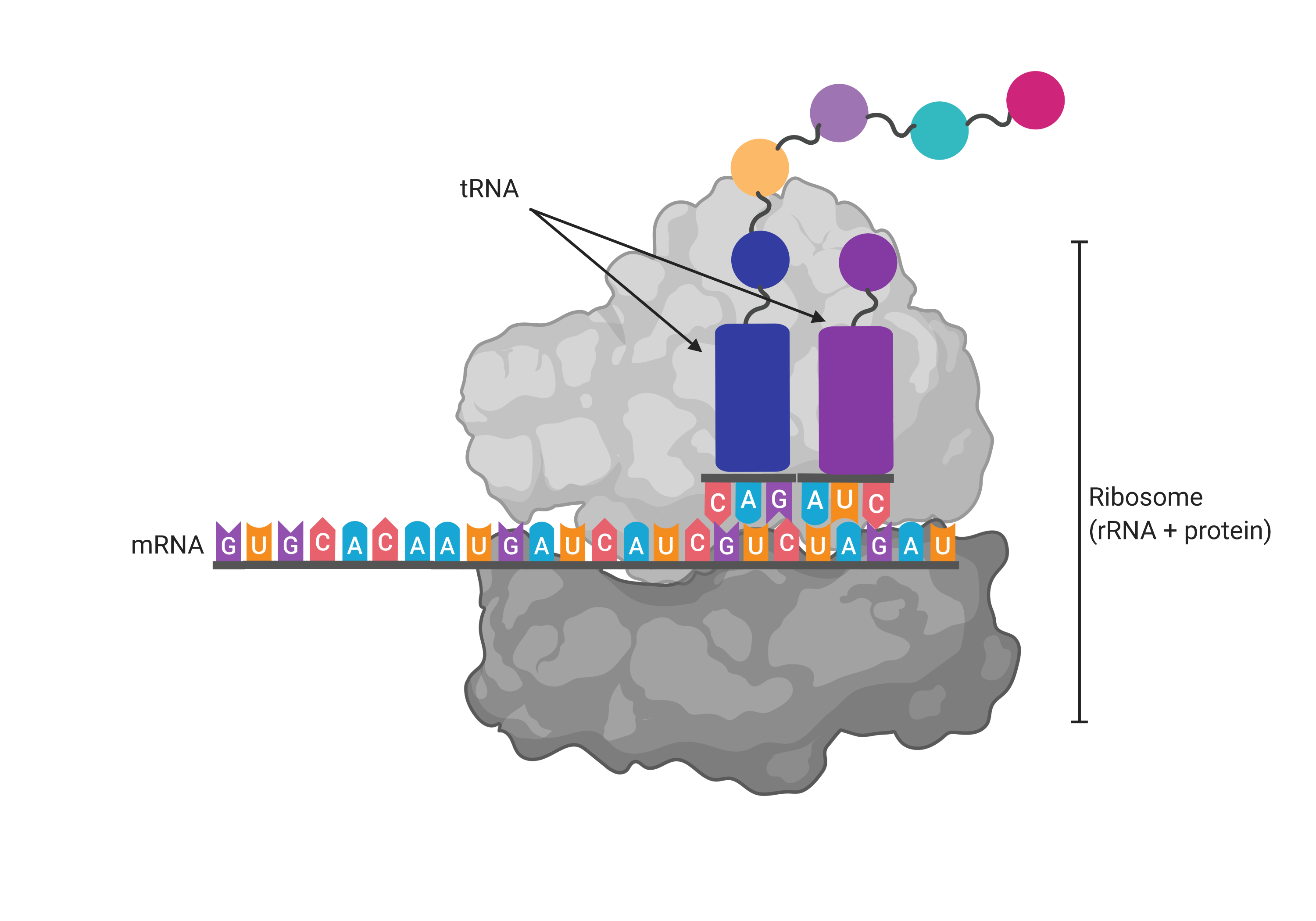
- Ribosome
-
A complex of proteins and rRNA that reads the codons of the mRNA and converts them into a chain of amino acids to produce a protein product in a process called translation.
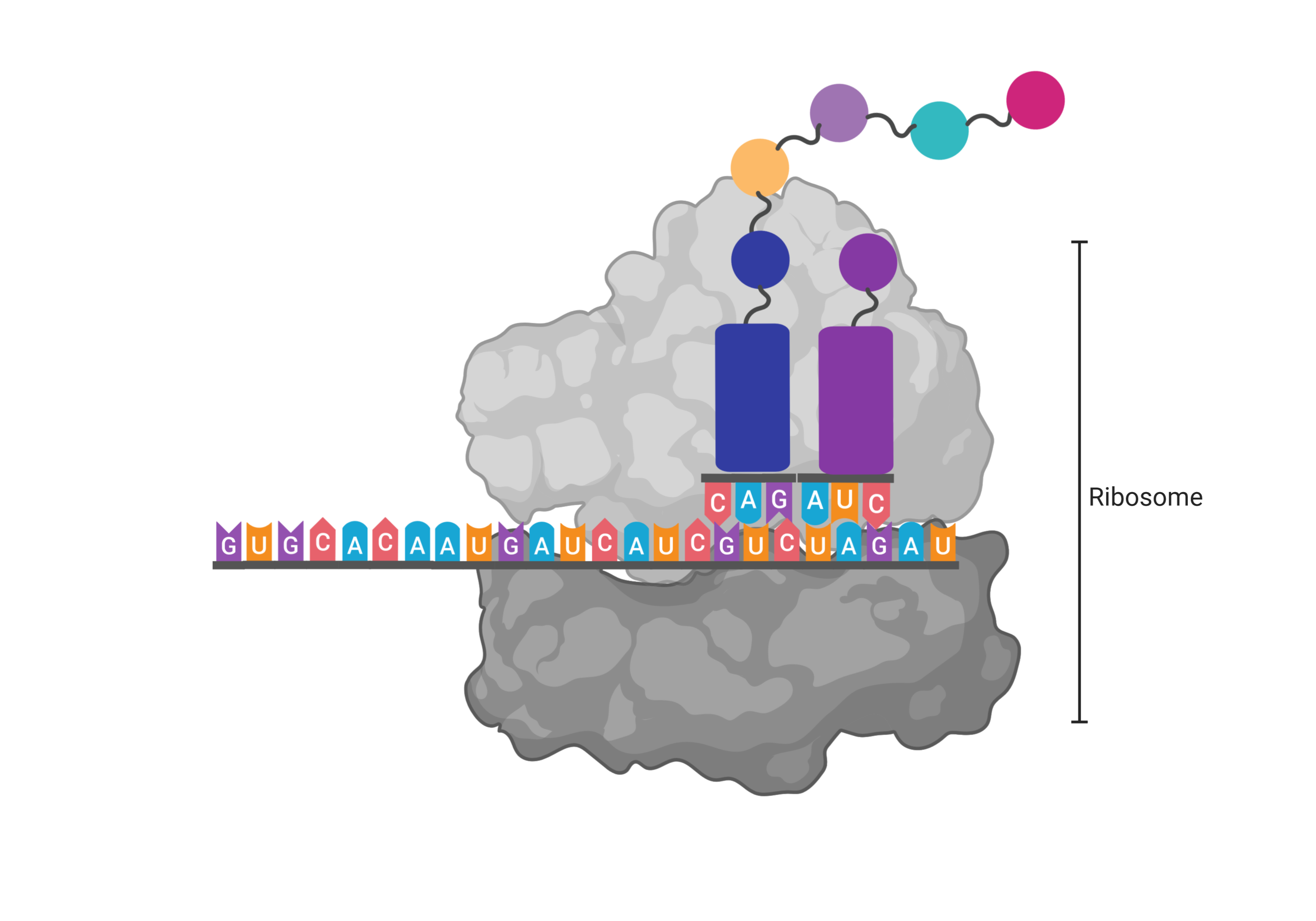
- RNA sequencing
-
The process of determining the order of nucleotides in RNA. It can be used to identify genetic mutations and changes in gene expression.

- Synapse
-
A synapse is a site where a neuron (neural cell) communicates with a target cell, for example another neuron or muscle cell.
- Synaptic remodeling
-
The process of changes in synapse number (eg. gain or loss) is referred to as synaptic remodeling.
- Somatic cell
-
A somatic cell is any cell of the body except sperm and egg cells.
- Transcript
-
An RNA molecule. RNA is produced by transcription.
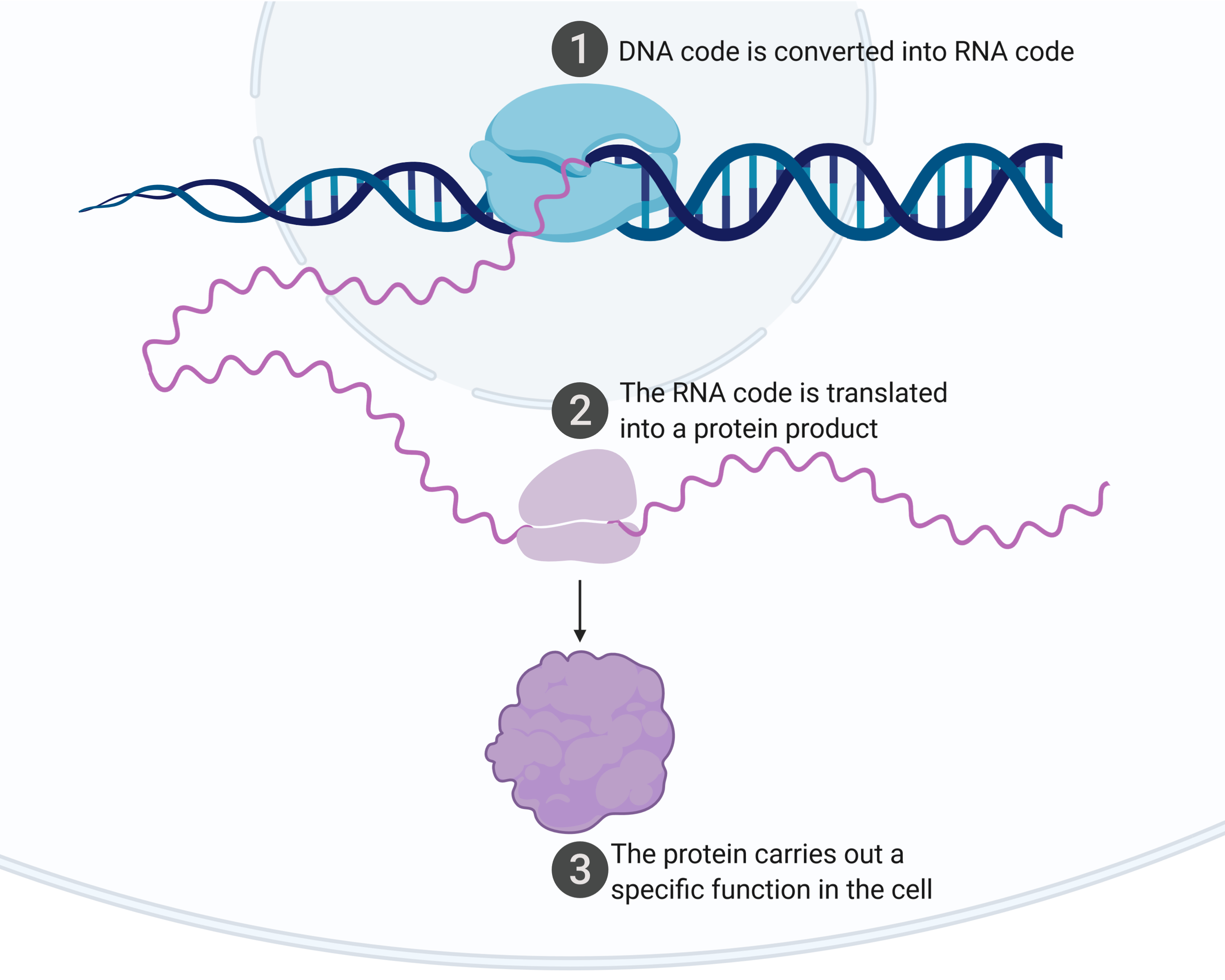
- Transcription
-
A biological process in which DNA is read by an enzyme called RNA polymerase, which uses DNA as a template to produce a complimentary RNA molecule.
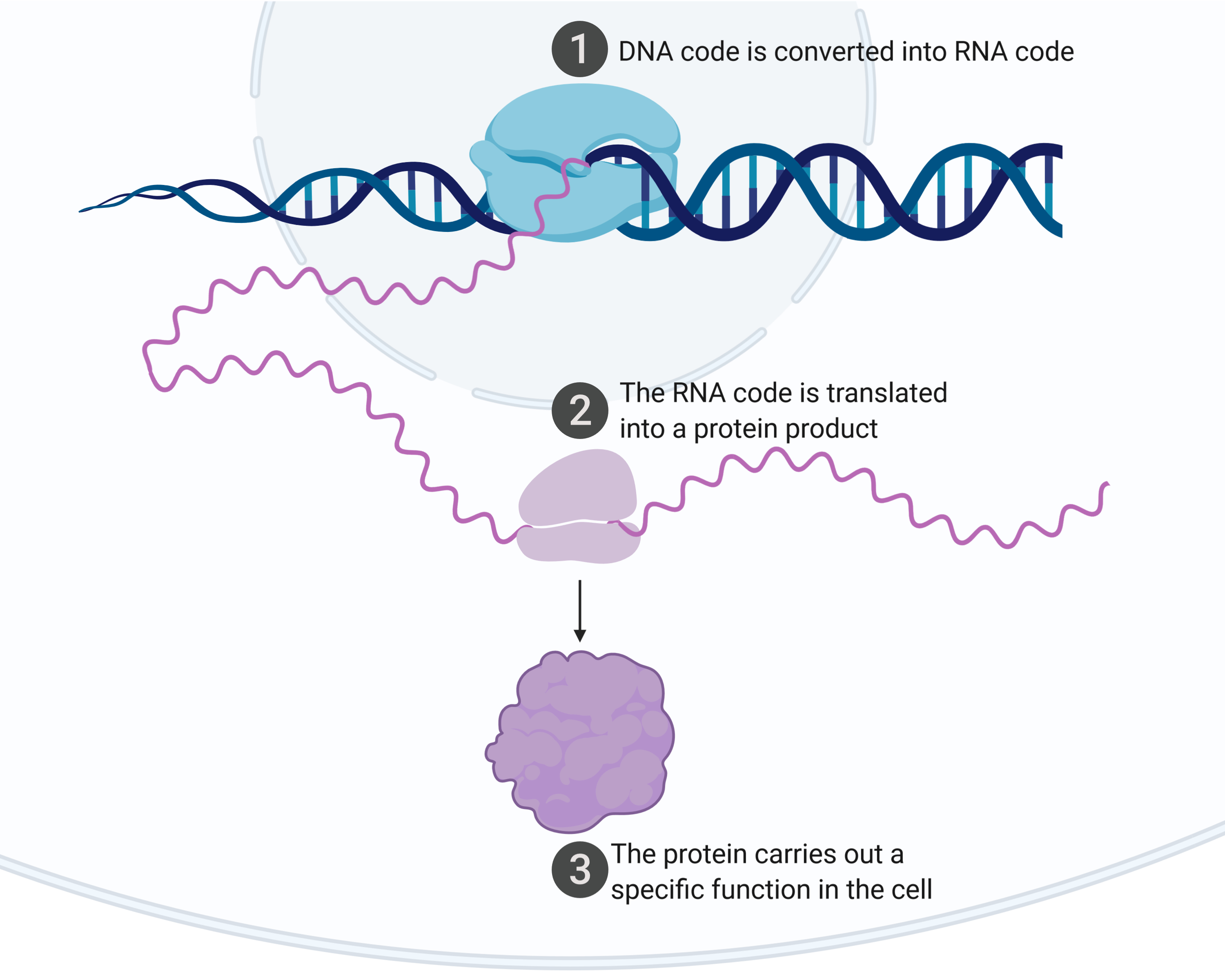
- Transcriptome
-
The complete set of RNA transcripts in a cell, tissue, organisms or sample.
- Transcriptomics
-
The study of the complete set of RNA transcripts in a cell, tissue, organisms or sample. Transcriptomics can be used to genetic mutations and changes in gene expression. Transcriptomics is usually done using a technology called RNA sequencing.
- Transfer RNA (tRNA)
-
RNA molecules that play a functional role in translation. They bring the amino acid building blocks to the ribosome and transfers it to the growing protein chain.
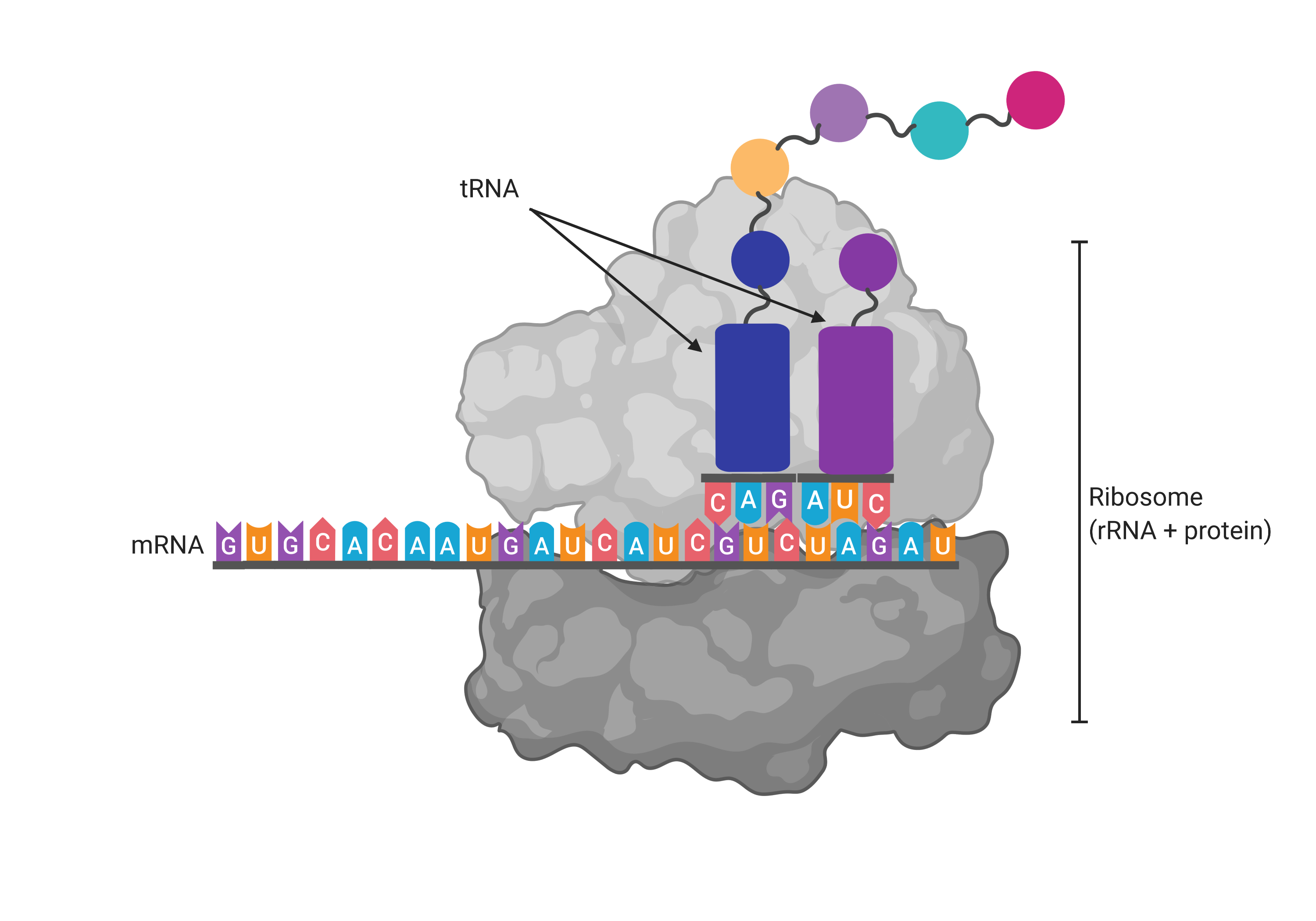
- Translation
-
A biological process in which the mRNA is read by the ribosome in groups of three nucleotides at a time (codons). The ribosome strings together amino acids in the sequence specified by the mRNA code to produce a protein product.
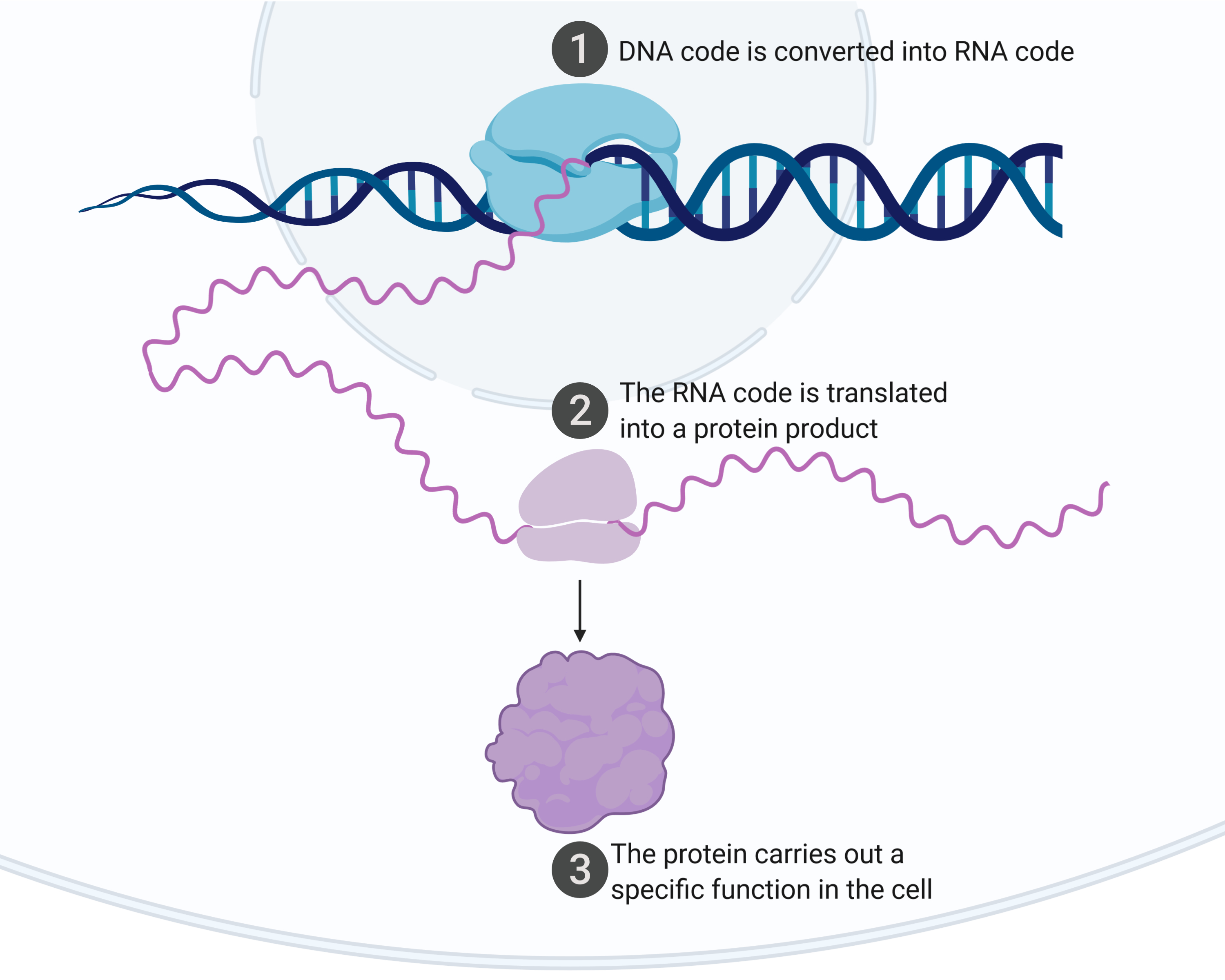
- Transposon
-
A transposon is a DNA sequence that's transcribed into RNA and reverse-transcribed into DNA, and then inserted elsewhere in the genome. Also referred to as a Transposable Element (TE) or jumping gene.
- Tumour
-
An abnormal growth resulting form the proliferation of cells. A tumour may be benign, meaning it is self-limiting and non-invasive, or it may be malignant, meaning it is cancerous. Cancerous tumours proliferate indefinitely, are invasive and can spread through metastasis.
- Tumour suppressor gene
-
A type of gene that regulates cell division. When mutated, uncontrolled cell proliferation and cancer may occur.
- Whole genome sequencing
-
DNA sequencing that aims to sequence all of the bases of an individual’s genome, including the exome and non-coding regions.
- X-chromosome
-
One of the two sex chromosomes in the human genome. Women generally carry two X chromosomes whereas men carry one X chromosome and one Y chromosome.
- y-chromosome
-
One of the two sex chromosomes in the human genome. Women generally do not carry a Y chromosome whereas men carry one X chromosome and one Y chromosome.
